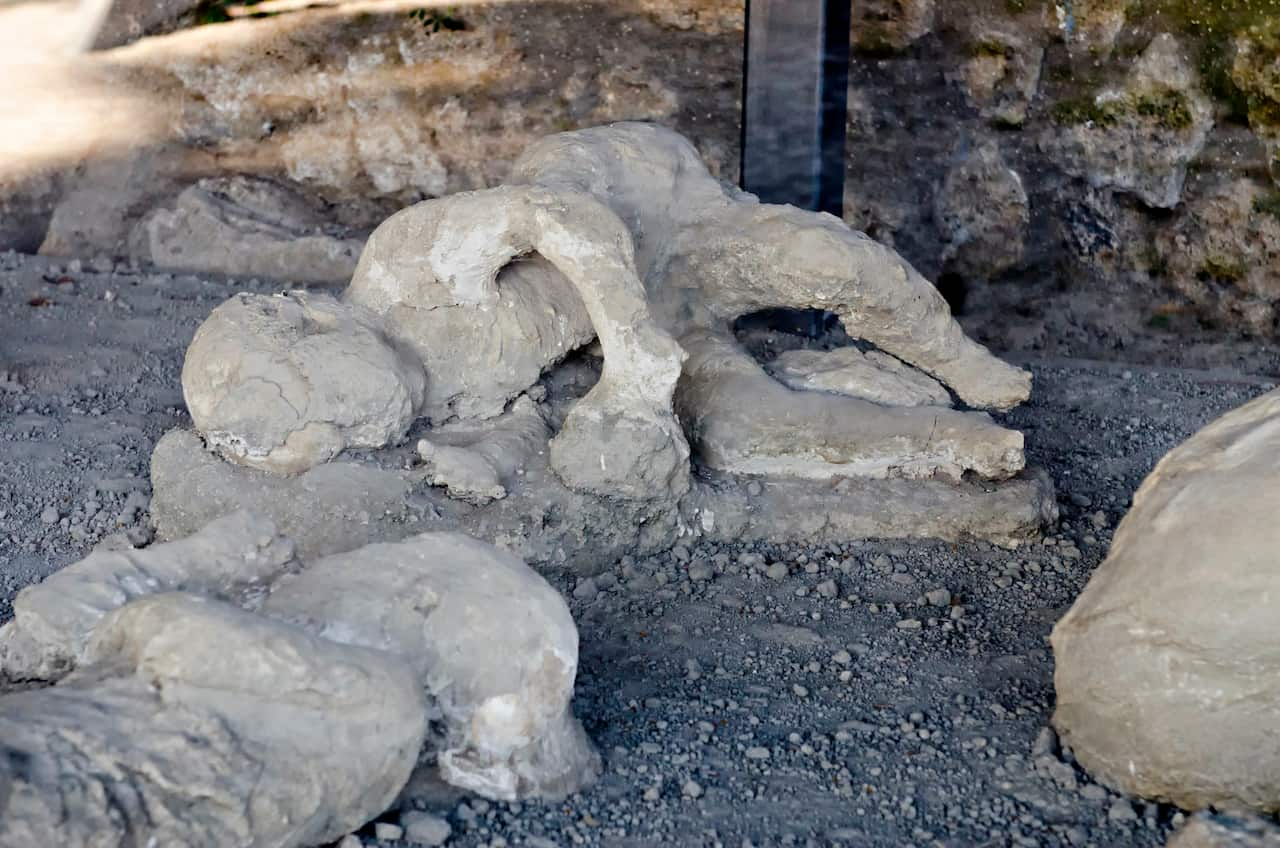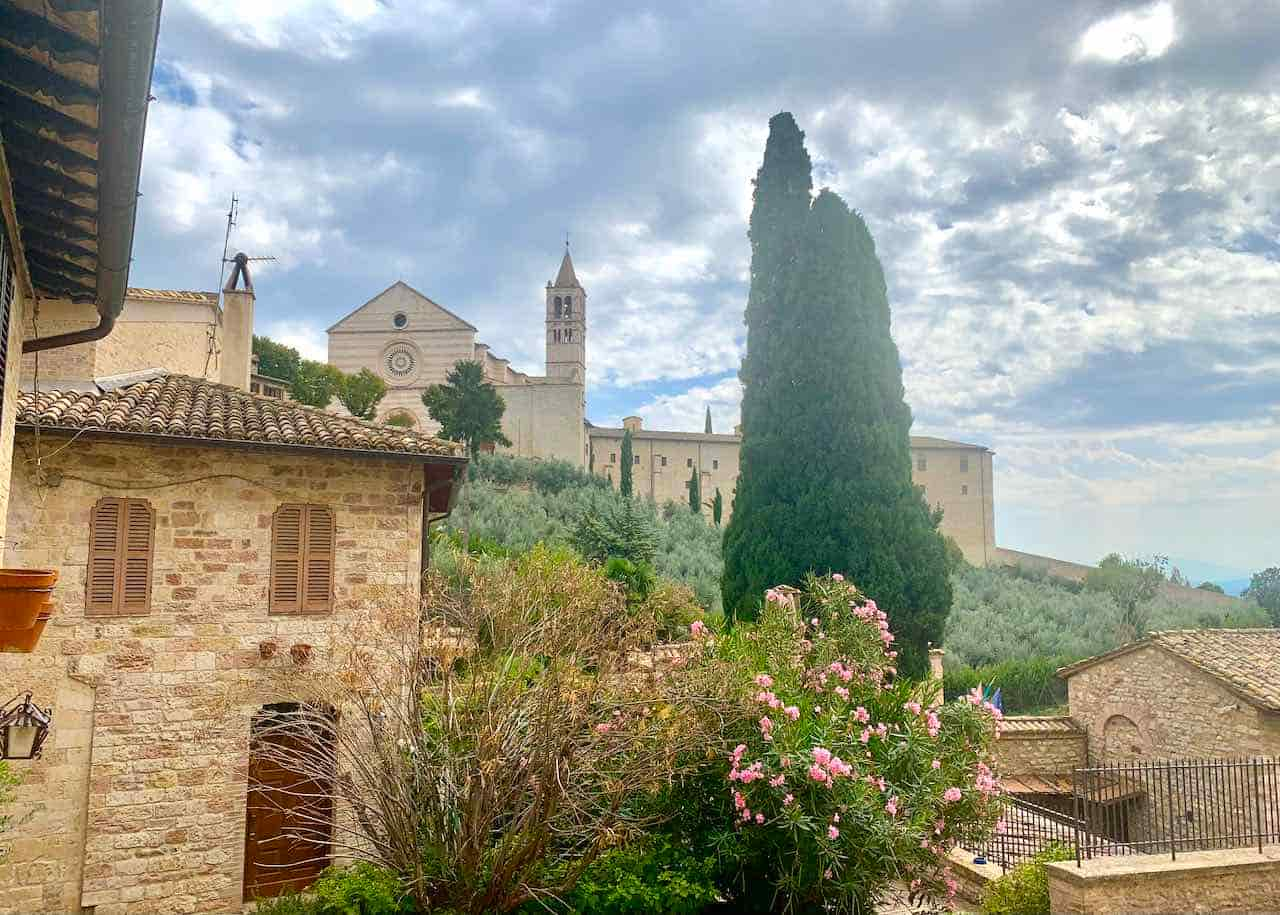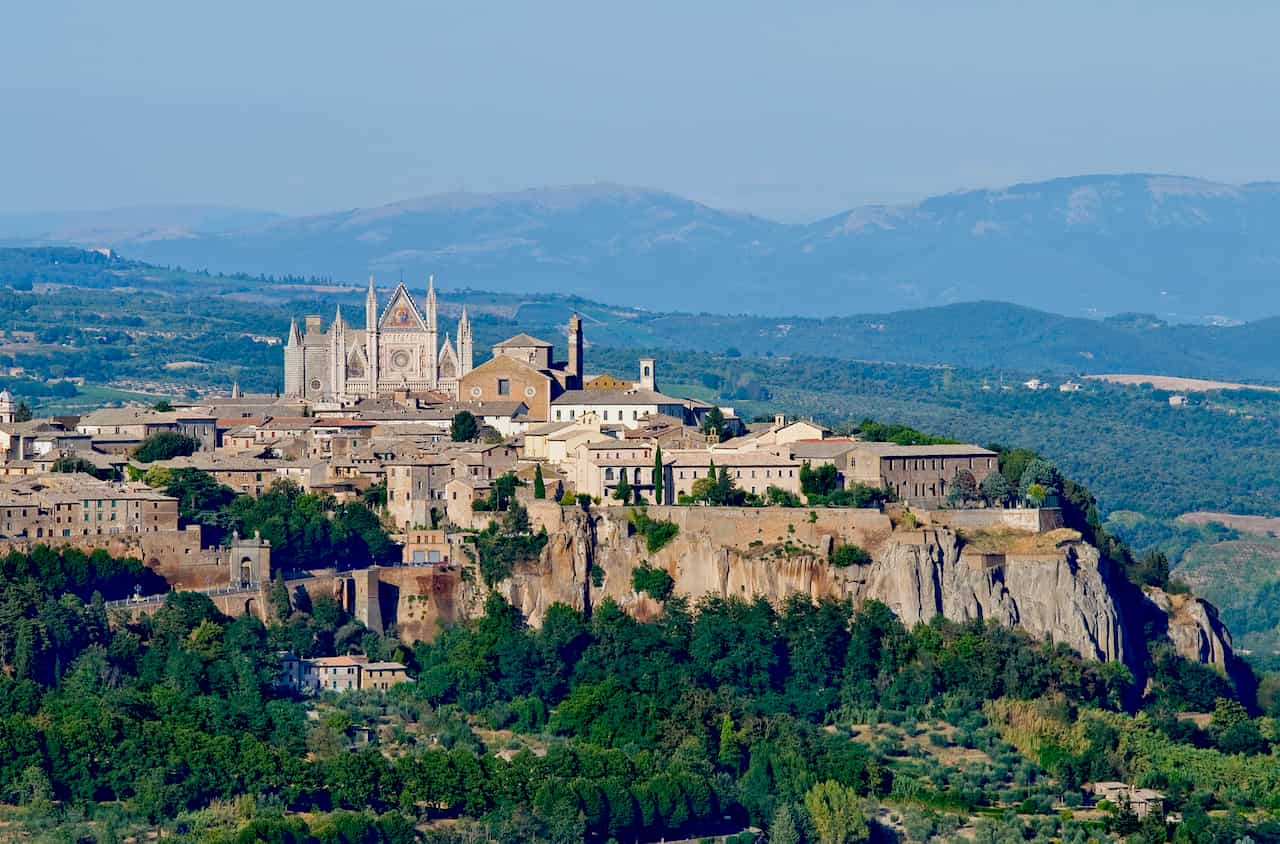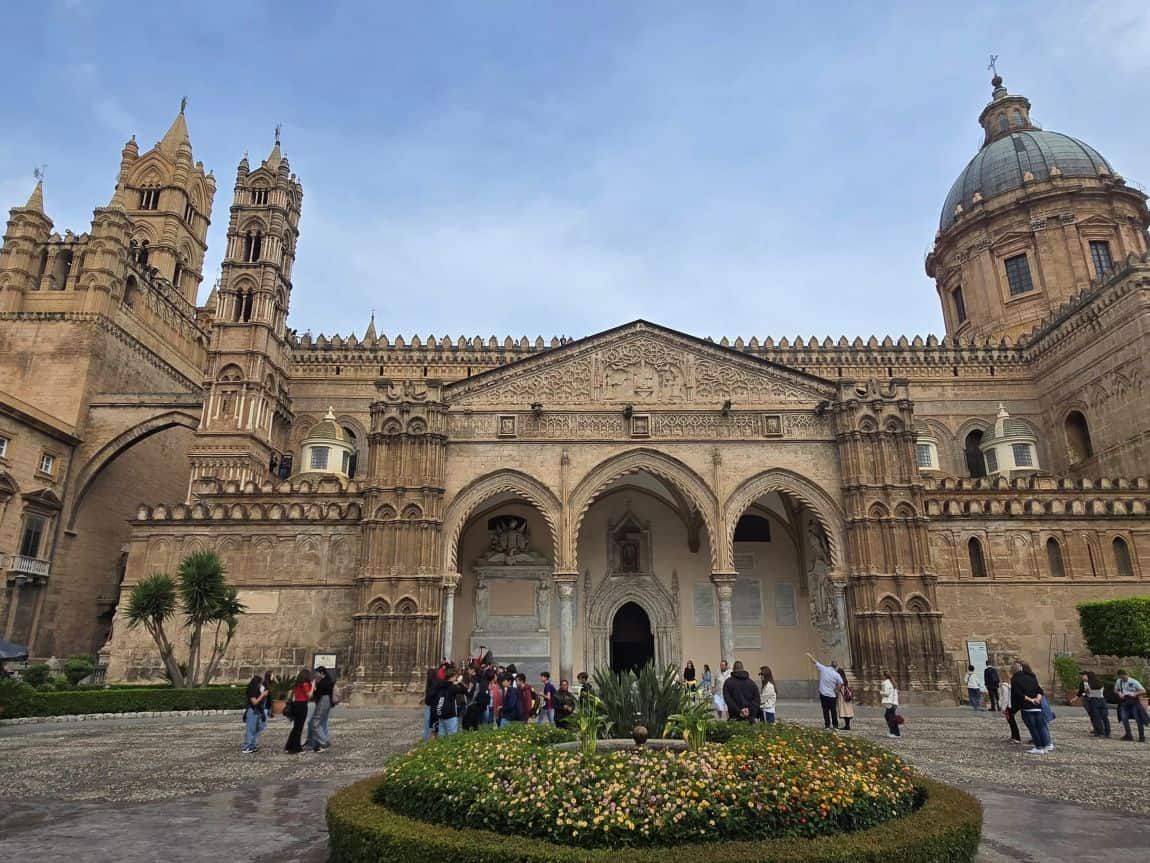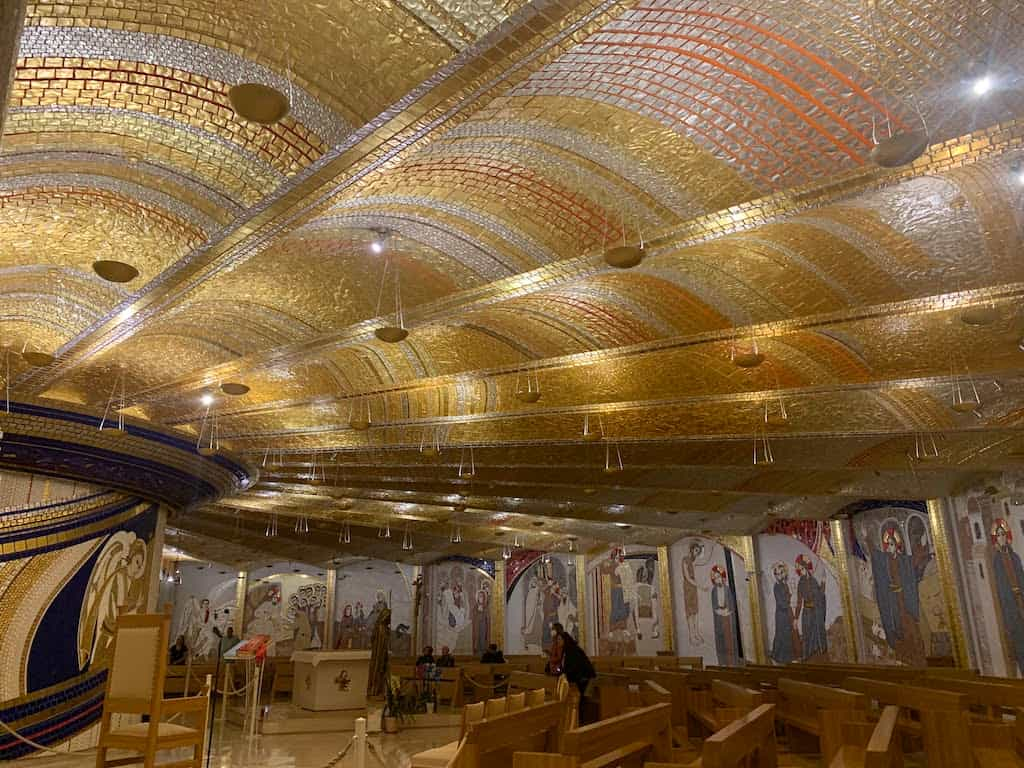Venice Bucket List: 23 Unique Things to Do in Venice
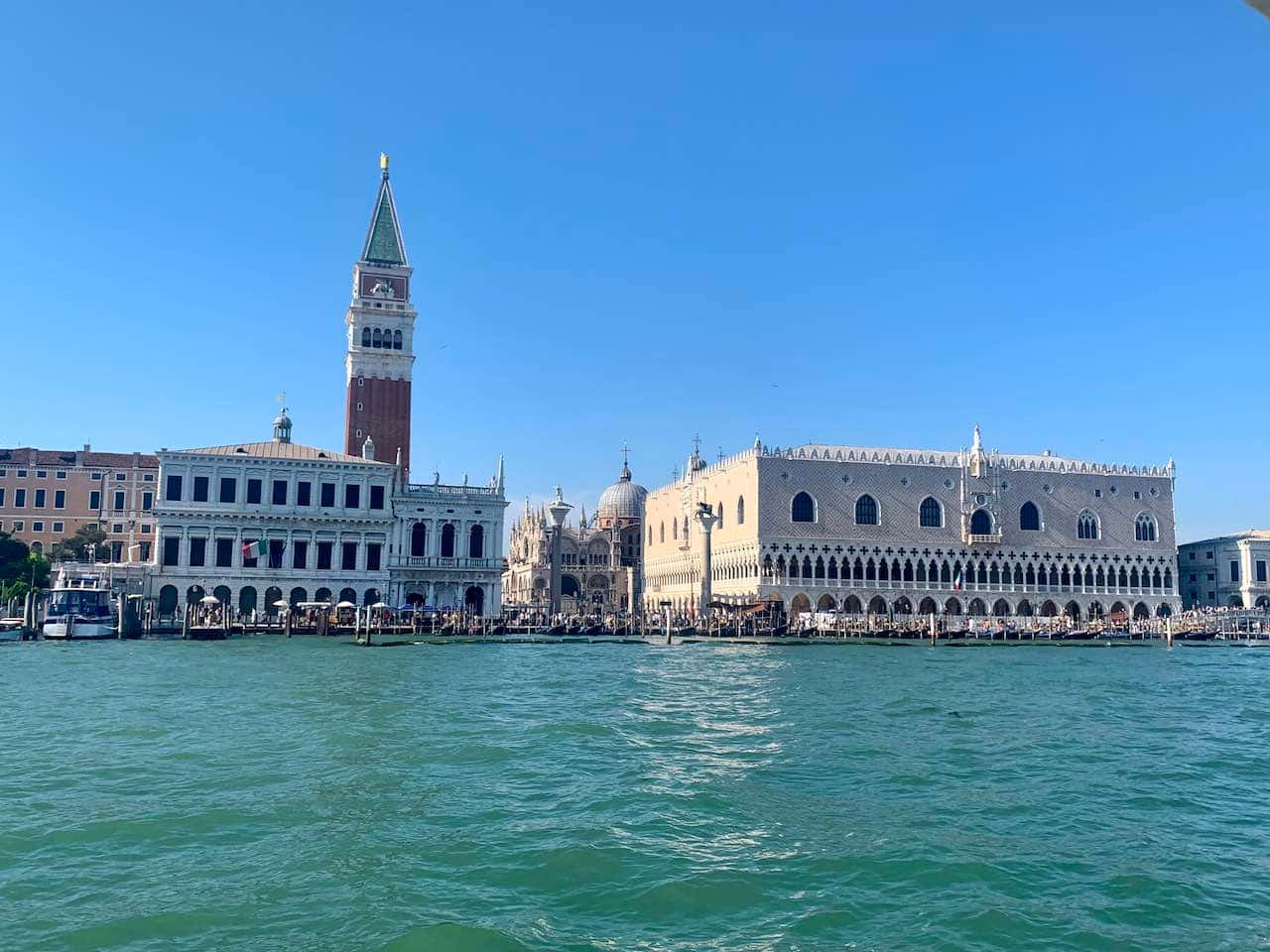
Are you looking for the best experiences in Venice, Italy? If so, let me help you. I have visited Venice several times. Every time I go to Venice, I discover something new and tick off a few items from my Venice bucket list. Here is my ultimate list of the unique things to do in Venice, I gathered during my trips to Venice.
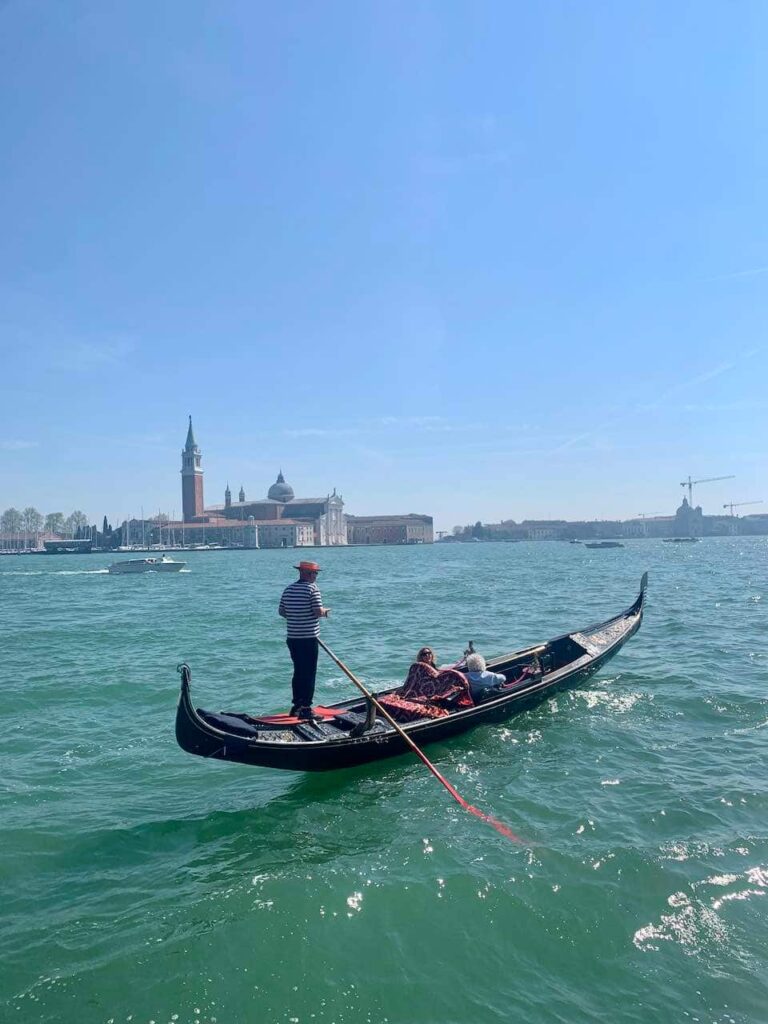
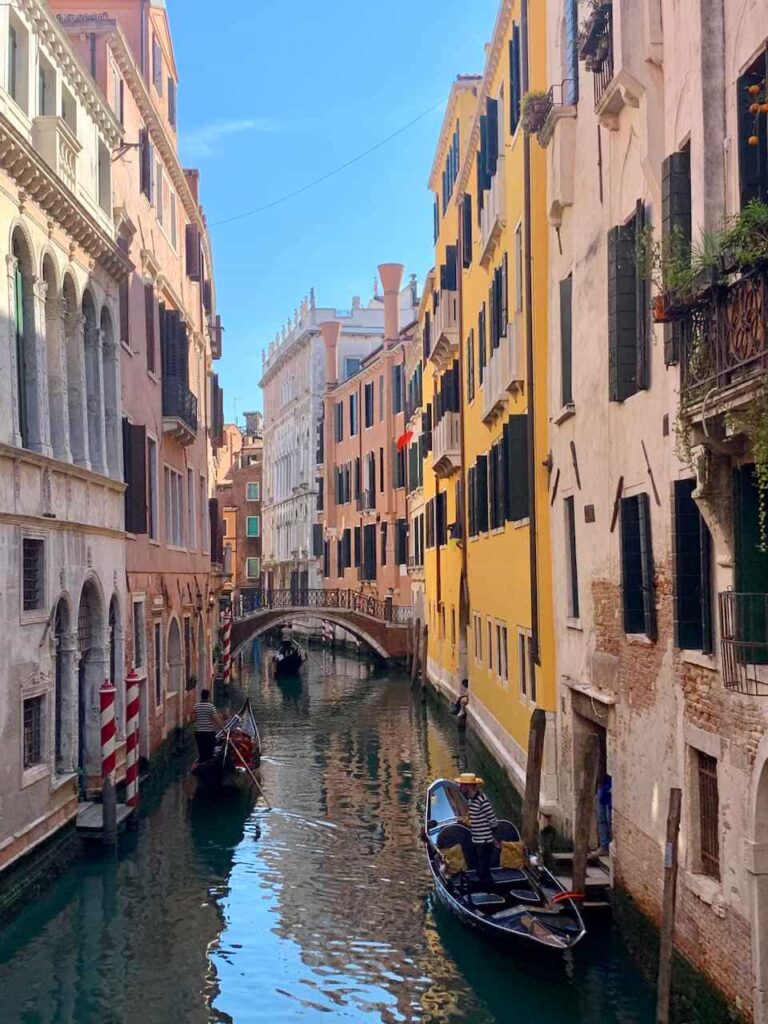
THIS POST MAY CONTAIN COMPENSATED LINKS. PLEASE READ MY DISCLAIMER FOR MORE INFO.
- Venice Bucket list: Unique Things to do in Venice
- 1. The Basilica of St Mark
- 2. The Campanile
- 3. Tour Dodge Pałace
- 4. Have coffee in Cafe Florian
- 5. Enjoy a gondola ride
- 6. Sleep in a palace
- 7. Try cicchetti in a bacarao
- 8. Check out the views from Fondaco dei Sala delle Tedeschi
- 9. Learn how to make a Venetian mask
- 10. Attend Venice Carnival
- 11. See how Murano glass is made
- 12. Pay a visit to the beaches of Lido
- 13. Escape the crowds in Venice
- 14. Tour Teatro La Fenice
- 15. See Libreria Acqua Alta
- 16. Visit the Peggy Guggenheim Museum
- 17. Go to Burano
- 18. Enjoy vaporetto rides in the Venice Lagoon
- 19. See the Bridge of Sighs
- 20. Go to Rialto market for a unique shopping experience
- 21. Dell’Accademia Museum Gallery
- 22. Tour the first Jewish Ghetto in Cannaregio
- 23. Scala Contarini del Bovolo
Venice Bucket list: Unique Things to do in Venice
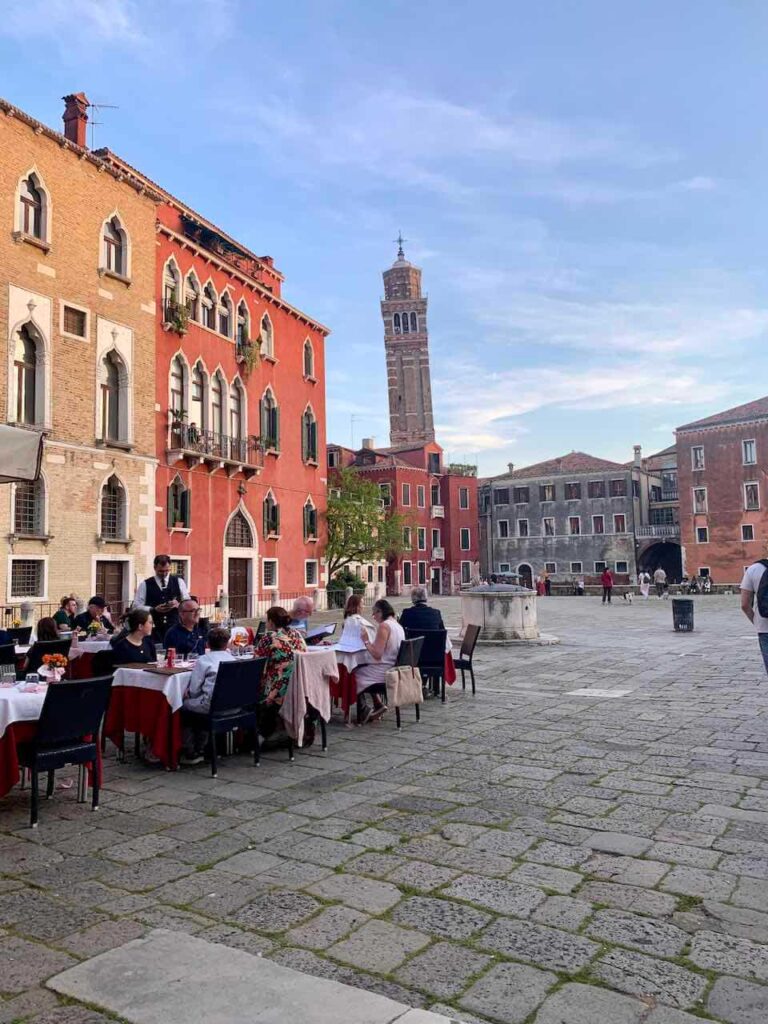
1. The Basilica of St Mark
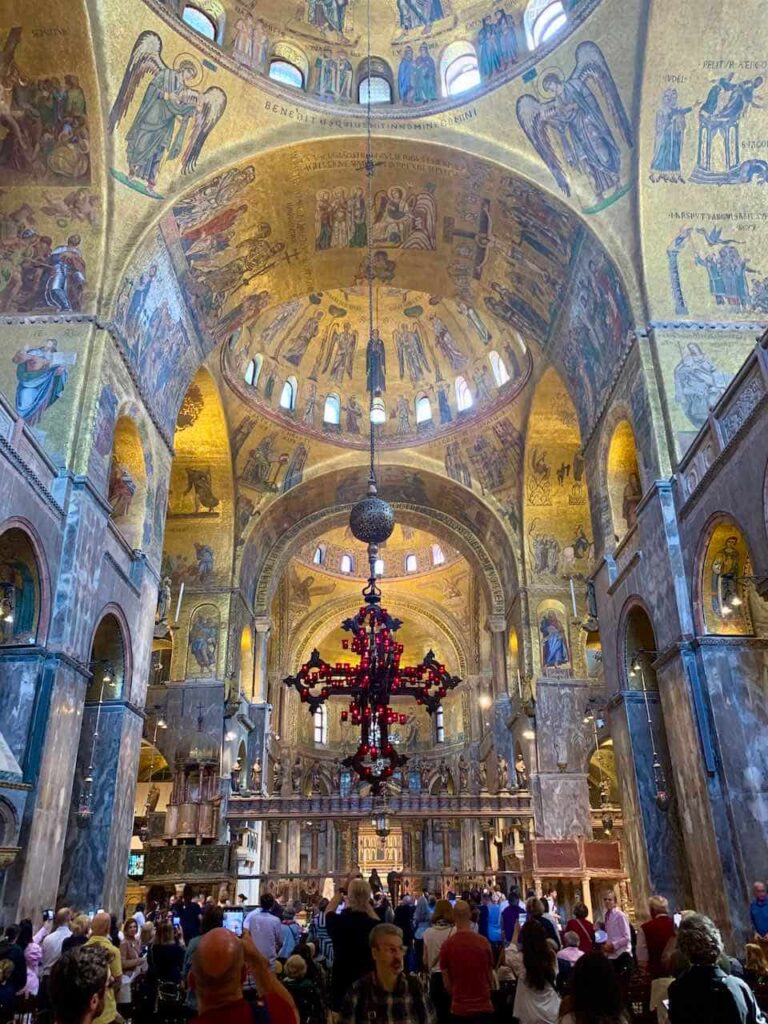
The Basilica of St Mark in Venice is one of the world’s most beautiful and unique churches. It is a landmark of Venice and a must-have item on any Venice bucket list.
The Basilica of St Mark in Venice is home to the relics of St Mark the Evangelist, the saint patron of Venice.
The church is so beautiful that it comes as an art piece alone. Its architecture is a unique mix of Byzantine, Romanesque, and Gothic styles.
The basilica covers over 4000 sq m, has five domes, 500 columns and capitals, and about 8000 sq m of gilded mosaics on its walls and ceilings. Marble from Syria, Palestine, and Egypt, and golden mosaics dominate its opulent interior. The Basilica hosts many treasures, like the famous Pala d’Oro (the Golden Panel). Pala d’Oro is a masterpiece high altar retable decorated with 1927 precious gems (emeralds, sapphires, amethysts, agates, rubies, topazes, carnelians, jaspers, etc). Regardless if you are religious or not, the Basilica of St Mark is a must-see in Venice. It is one of the most unique buildings in the world.
Visitors can tour the basilica on their own or a guided visit with a local expert guide. Read more about how to visit the Basilica of St Mark in Venice.
2. The Campanile
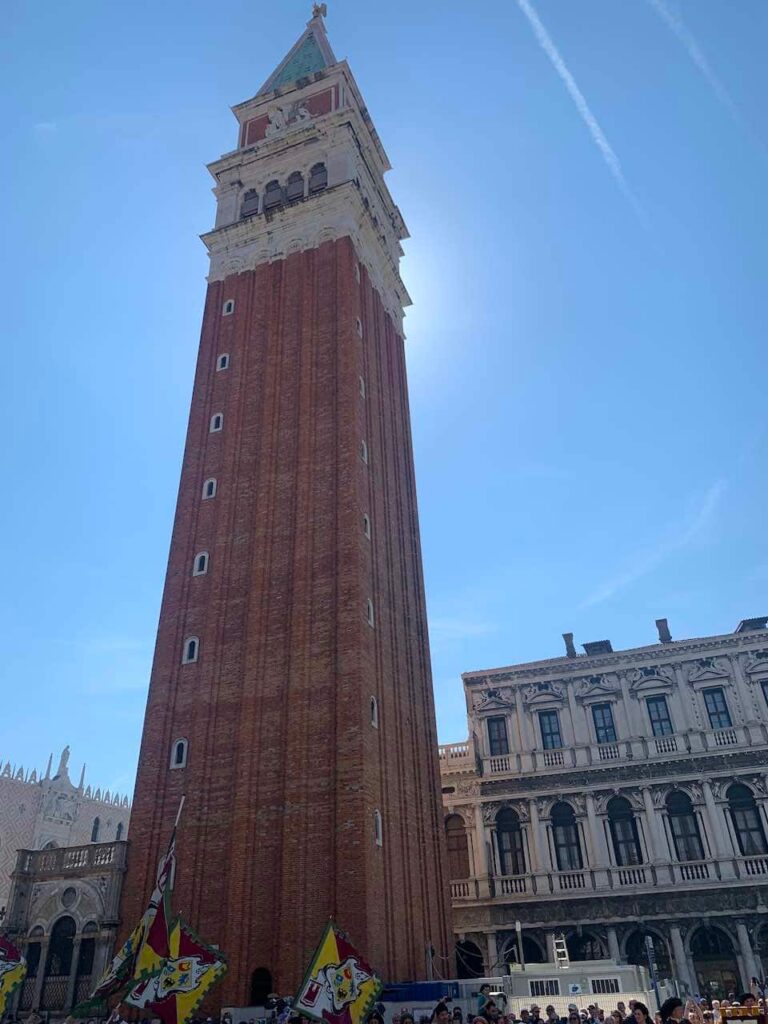
The Bell Tower (the Campanile in Italian) is a part of the Basilica of St Mark complex. Like the Basilica of St Mark, the Bell Tower is a landmark of Venice.
The Campanile stands alone a few steps from the St Mark’s Basilica. With a height of 99 m, the Bell Tower is the tallest building in Venice. That being so, it provides the best panoramic views of Venice and Venice Lagoon. So, don’t miss out on climbing the Campanile. You have to see Venice and its lagoon from the above!
Add it to your Venice bucket list and thank me after you see the views for its top!
The Bell Tower is open from 9.30 am to 8.45 pm from Monday to Sunday. The ticket to the Campanile is 10 €.
3. Tour Dodge Pałace
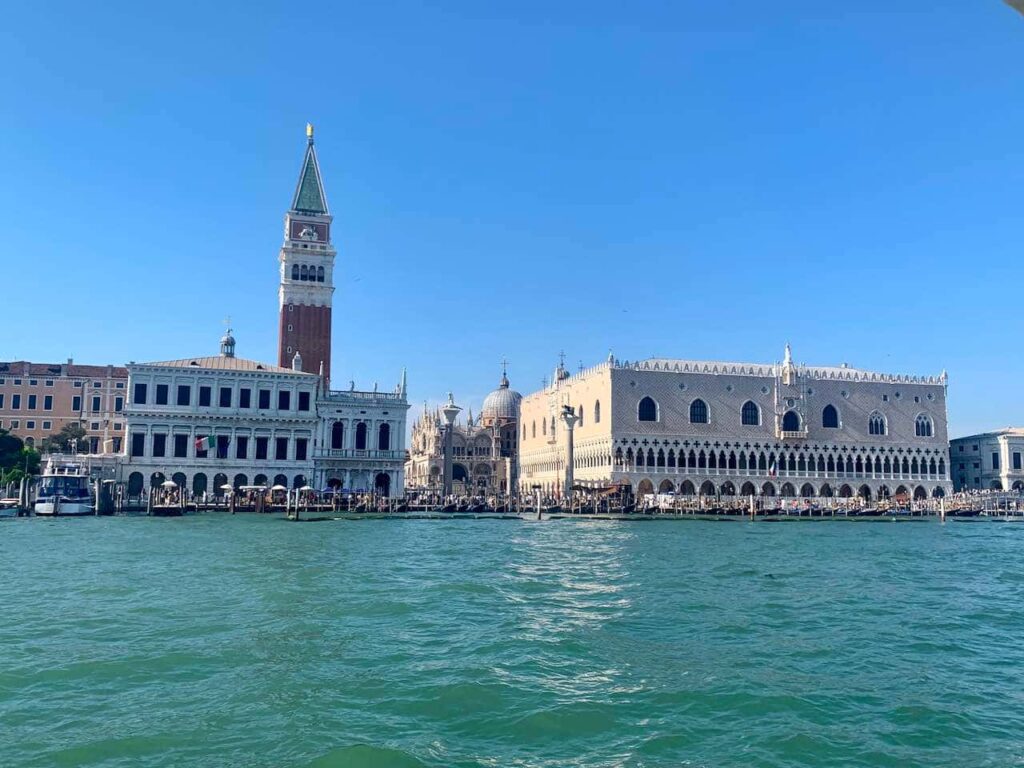
The Basilica of St Mark, Campanile, and Dodge Palace are the major landmarks of Venice. The Dodge Palace was the seat of the government of the Venice Republic for seven centuries. It was also the residence of Dodge, the head of Venice.
The Dodge Palace housed public offices, courtrooms, the Dodge apartments, stables, prisons, and other facilities. It was the center of public life and public administration of Venice Republic for several centuries (until 1797, the fall of Venice Republic).
The Dodge Place is one of the most beautiful buildings in Venice. It was built in the 14th century in the stunning Venetian Gothic style, next to the Grand Canal and the Basilica of St Mark. Some parts and ornaments had been added in the later centuries, especially after a big fire in 1577.
Today’s public entrance to the Dodge Palace is from its Grand Canal side. This side of the Dodge Palace, with the imposing ground floor arcade and the loggia, is the oldest part.
Today’s Museo dell’Opera (but originally the palace kitchen) is on the ground floor. The Censor’s Staircase and the Gold Staircase take visitors from a stunning courtyard on the ground floor to the Loggia and Dodge’s Apartments on the first floor and to the Institutional Chambers on the first and the second floors. The Armoury and the Prisons (linked by the Bridge of Sighs) are the parts of the Dodge Palace complex that are also available for visiting.
Each palace room is decorated with stuccos, paintings, and sculptures by great artists like Titian, Tintoretto, Veronese, and Tiepolo.
The Hall of the Four Doors (Sala dell Quattro Porte), Shield Room (Sala della Scudo), and Hall of the Grand Council (Sala del Maggior Consiglio) are some of the most significant and beautiful rooms of the Palace. Palladio designed the Hall of the Four Doors, which houses works of Titian, Giovanni Cambi, and Tiepolo, along with other artworks. The Shield Rom houses the world maps that show the power of the Republic of Venice from the 15th to the 18th century. But the most spectacular and the largest room of the Palace is the Hall of the Grand Council. The Hall of the Grand Council was the main meeting room of the Great Council of Venice Republic (made of 1200 to 2000 Venetian noblemen) for important events.
Dodge Palace is open from 9 am to 6 pm from Sunday to Thursday, and from 9 am to 10 pm from Friday to Saturday. The ticket to the Dodge Palace is 30 €. You can buy it here.
4. Have coffee in Cafe Florian
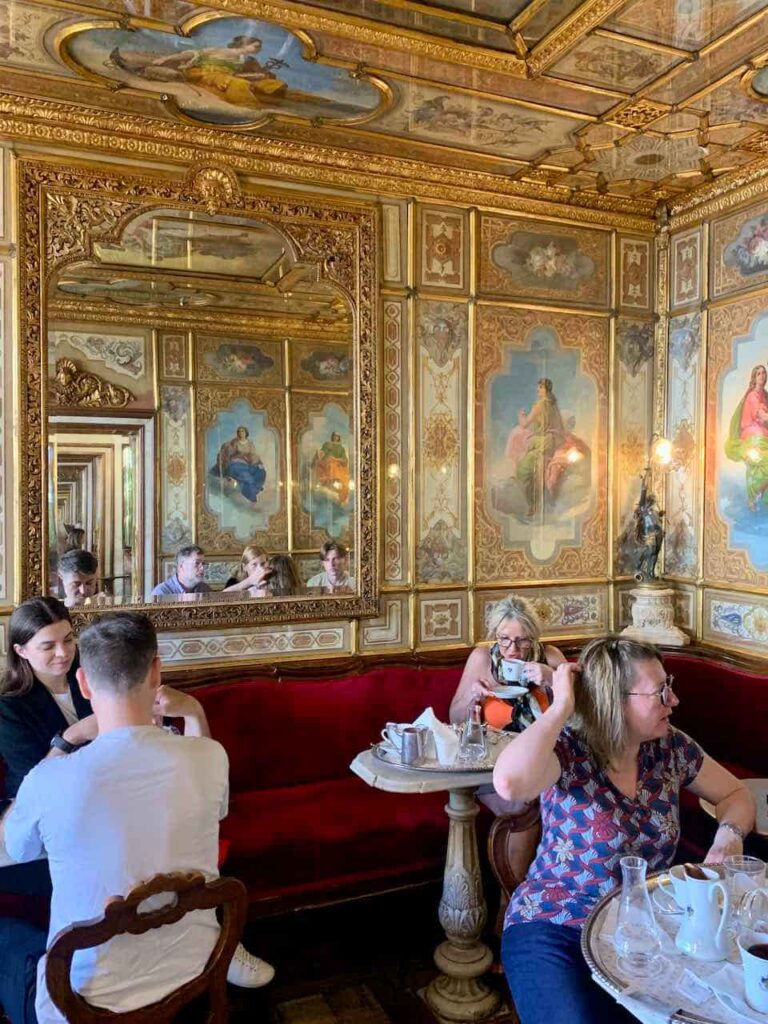
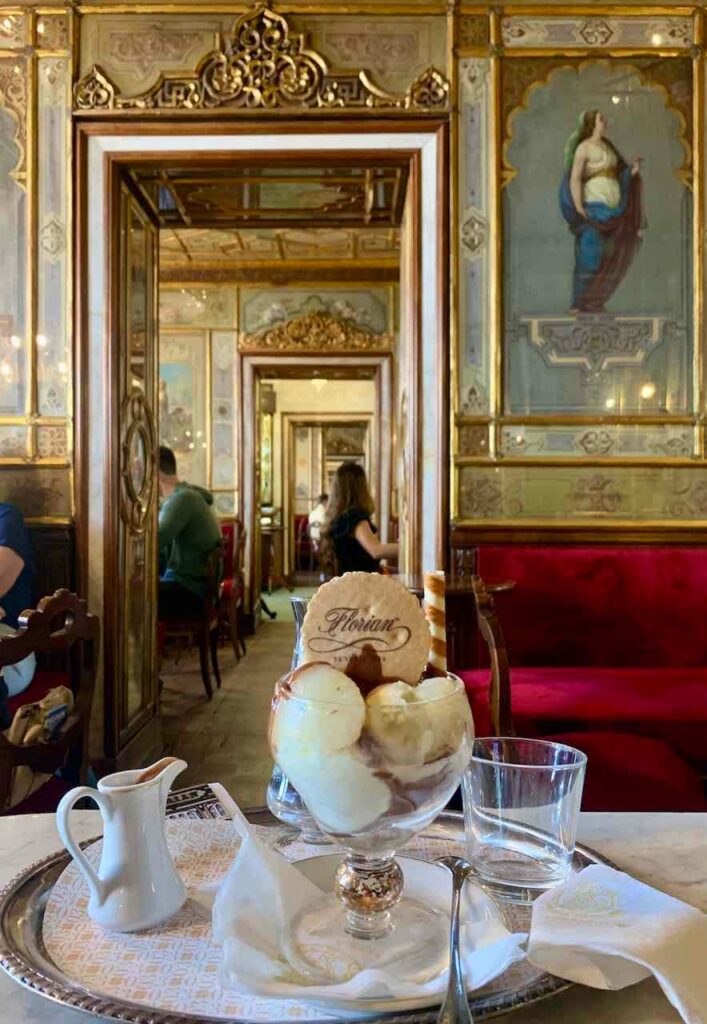
Opened in 1720, Caffè Florian in Venice is the oldest coffee house in Italy. It is also one of the most beautiful and famous world cafes.
Notable historical figures and celebrities like Goethe, Lord Byron, Charles Dickens, Casanova, and Marcel Proust were its regular guests. Caffe Florian consists of several stunning salons: the Chinese Room, Oriental Room, Room of the Illustrious Men, Senate Room, Room of Seasons, and Liberty Room. Each of them is unique and gorgeous and takes guests back in time.
Caffè Florian is on St Mark’s Square, a few steps from the Campanile and the Basilica of St Mark. Enjoying the unique historic ambiance of the Caffe Florian is among the most unique things to do in Venice. Don’t miss out on visiting one of the world’s oldest coffee houses in Venice! However, remember, this famous historic coffee house comes with hefty prices.
Caffè Florian is open from 9 am to 11 pm, Monday to Sunday.
5. Enjoy a gondola ride

The gondola is a symbol of Venice. It is a unique ancient transport mean of Venice.
Venice has no cars, trams, and buses. But it has gondolas, vaporetti (ferries/water buses), traghetti (small ferries) and boat taxis.
The gondola is a traditional rowing boat of Venice. It has been the main means of transport in Venice for centuries. The gondola was designed to suit the waters of Venice Lagoon. An oarsman (gondolier) manages the flat-bottomed gondola with a single long oar. Although locals still use gondolas, they are primarily a tourist attraction these days. Taking a romantic gondola ride on the canals of Venice is particularly popular among couples. Whether you are romantic or not, with a partner or not, having a gondola ride in Venice is a must-have once in a lifetime.
Today, a gondola ride has a fixed rate (set by a guild of gondoliers). The price of a 30-minute gondola ride during the day (9 am to 7 pm) is 90€, and during the night (7 pm- 3 am) is 110 €. These are the fees for hiring a gondola (not per passenger). Each additional 20 minutes of ride costs extras 40 €.
A gondola can take up to 5 people. However, if you wish a gondolier to sing, you must pay some extra money. In this case, you need to negotiate the price.
The most beautiful gondola rides are at sunset for the gorgeous shades of light and water. So, head to a gondola prier and hire a gondola for a unique experience in Venice. You can book a gondola ride in advance here.
6. Sleep in a palace
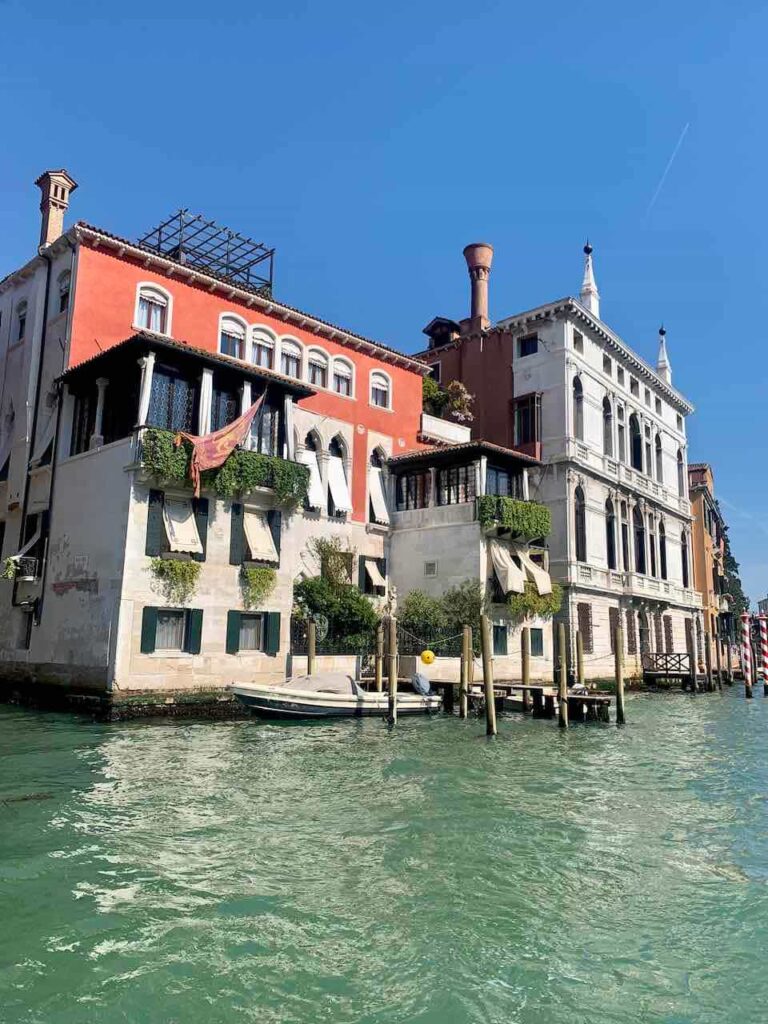
Palaces (palazzos) are a synonym of the luxurious life of the once mighty Venice. Palaces were homes and warehouses of the merchant nobility of Venice.
There are about 200 historic palaces in the historic center of Venice. Many were built in the 14th and 15th centuries in the Venetian Gothic style, known for their Gothic arches and Byzantine and Arabic influences. Several palaces were built later in the 16th century in the Renaissance style, in the 17th century in the Baroque style, and the mid-18th century in the Neoclassical style. They are all unique and beautiful.
The most beautiful palaces in Venice are along the Grand Canal. Some of the hotels now, like the Gritti Palace, Ca’ Sagredo Hotel, Hotel Palazzo Stern, and Palazzetto Pisani Grand Canal
Not all palaces are waterfront, but they still provide a unique palatial experience, like the San Ruzzini Palace Hotel close to St Mark’s Square. If you are traveling on a budget and wish to sleep in a palace, check out Palazzo Marcello Hotel Al Sole in the Santa Croce neighborhood.
7. Try cicchetti in a bacarao
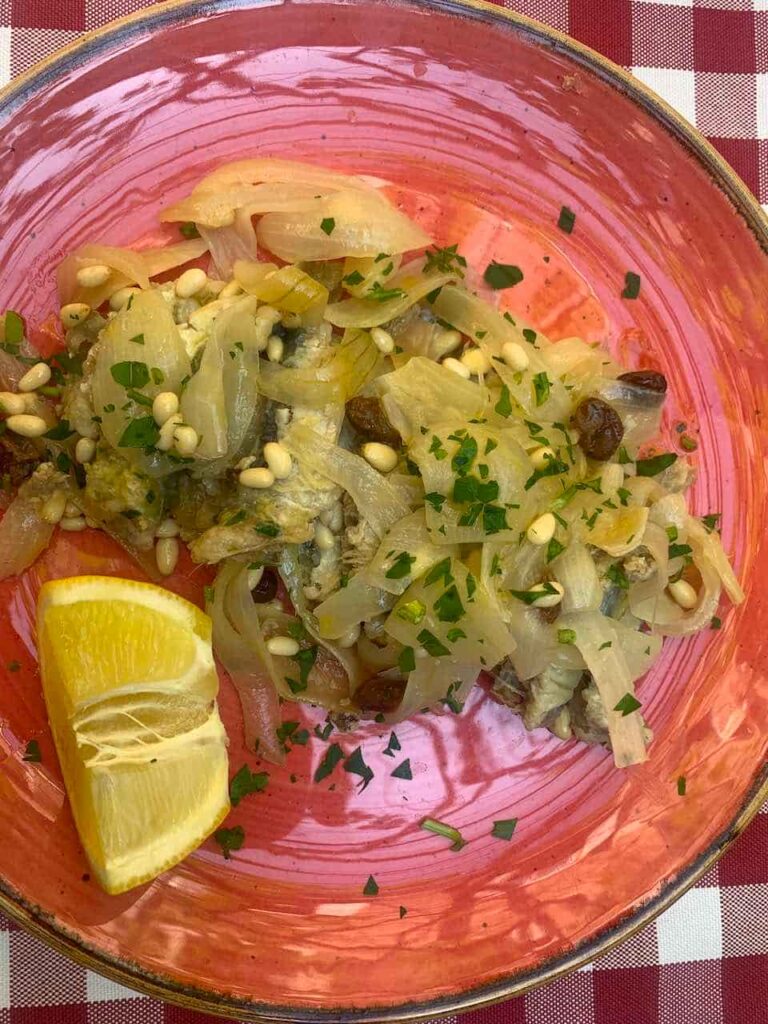
Cicchetti (pl.) are traditional Venetian snacks and local Venetian delicacies.
They can be finger food or small plates, just like Spanish tapas in Spain. Cicchetti are typically eaten before a meal or as a quick lunch. They are enjoyed over a glass of wine in local bars called bacari (pl). They can also be taken out and enjoyed in the streets in front of bacari.
Venetians also like to stroll bacari, pick up a couple of cicchetti and go to the next.
Crutons with creamy codfish (crostini con baccala mantecato), fried sardines with pine nuts (sarde in soar), and friend mozzarella with ham or anchovies (mozzarella in carozza) are some of the most liked Venetian cicchetti. You can tour bacari in Venice independently or join this guided tour. In any case, cicchetti are not to be missed out in Venice!
8. Check out the views from Fondaco dei Sala delle Tedeschi
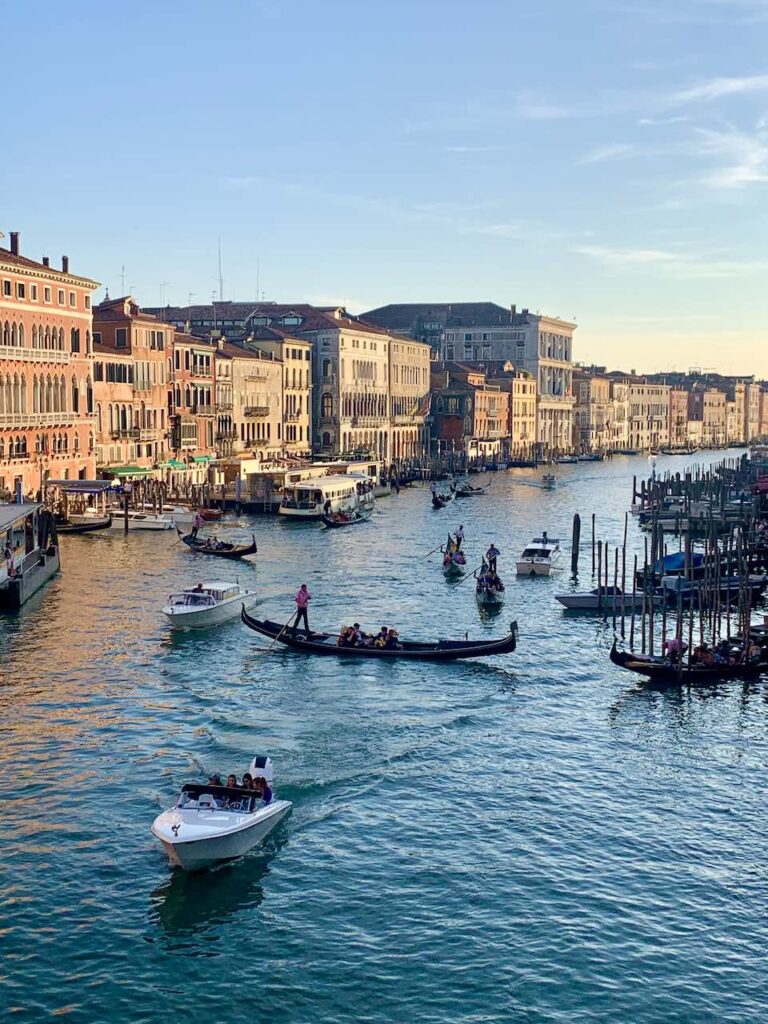
Fondaco dei Tedeschi is a Venetian palace near Rialto Bridge. The palace overlooks the Grand Canal. In the past, the place was a goods warehouse by German merchants. Today, the palace is a luxury shopping mall called Fondaco dei Sala delle Tedeschi. However, the mall is best known for its roof terrace that provides spectacular views of the Grand Canal and Venice.
There is no admission fee for visiting the mall and its terrace. But visits to the terrace need to be booked. So, head to Fondaco dei Sala delle Tedeschi near the Rialto Bridge. Go straight to the last floor and ask a clerk to book a visit to the terrace. You might get lucky and go straight to the waiting line if there are no crowds! Enjoy the views of the majestic Grand Canal from the rooftop terrace of Fondaco dei Sala delle Tedeschi!
9. Learn how to make a Venetian mask
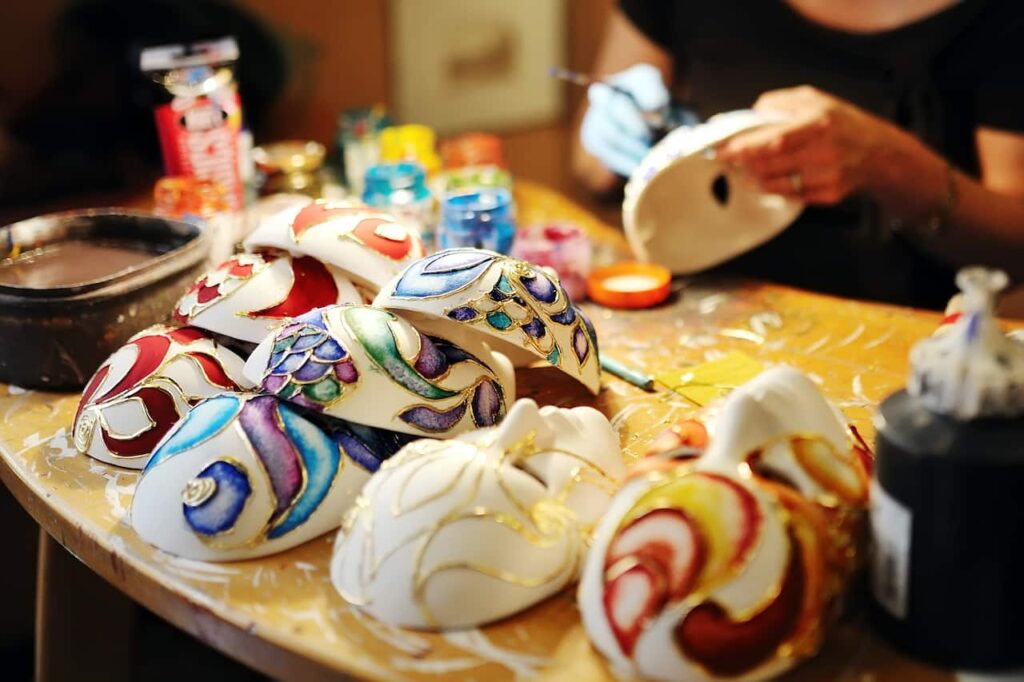
Venice Carnival is one of the most famous carnivals in the world. Lavish Venetian masks and costumes are a symbol of Venice.
Volto mask, bauta mask, colombina, medico delle paste, pantalone, zanni, moretta, and arlecchino are the traditional Venetian masks. Each of them has its meaning and history. You can read more about them in my post about Venice Carnival and traditional Venetian masks. You will love their historical meaning and enjoy their features!
A Venetian mask is among the most popular souvenirs to bring home from a trip to Venice. But you will love your Venice mask even more if you make it with your hands. Book a Venetian mask workshop, have fun, learn about Venetian masks, make your mask, and take it home with you!
10. Attend Venice Carnival
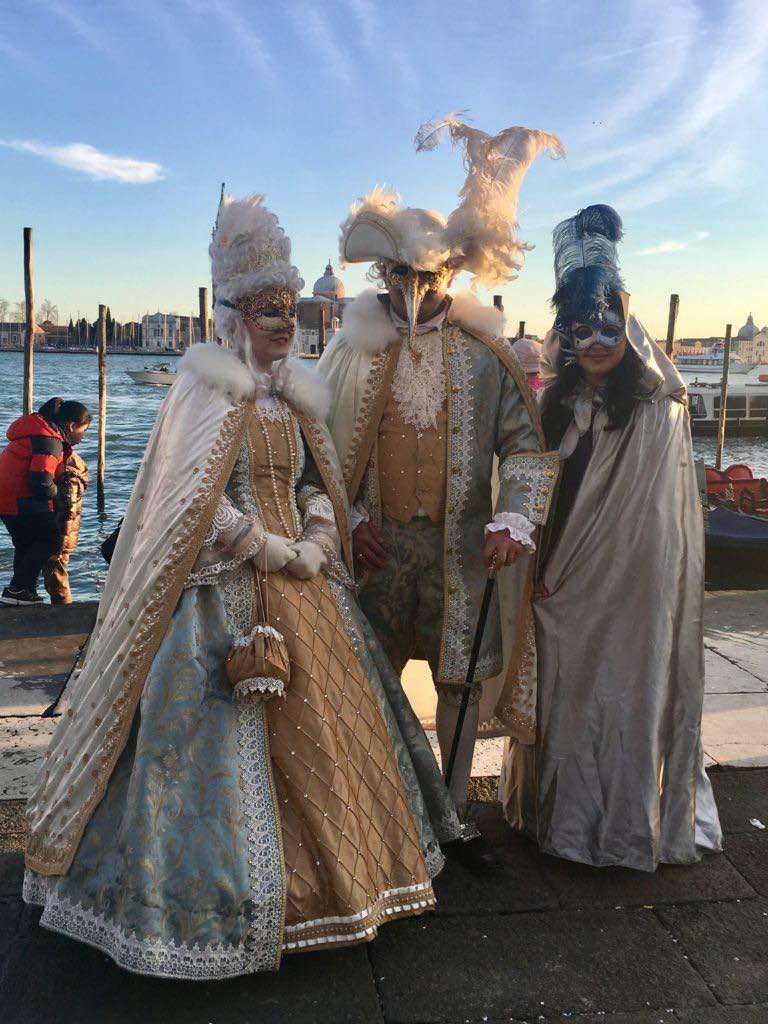
Venice Carnival is known as one of the most spectacular carnivals in the world. Venice gets flooded with stunning masks and costumes, dancers, singers, masked performers, acrobats, and different artists during the carnival time. The entire city becomes their stage. Venice Carnival is a must-see in a lifetime.
The tradition of Venice Carnival traces back to the Middle Ages when the lower classes were allowed to publicly mock Venice aristocracy and authorities during the Carnival and before Lent.
Venice Carnival happens in February or early March (depending on Easter). It lasts ten days and ends on Fat Tuesday (Mardi Gras). I’ve been to Venice during the Carnival twice. Read more about the Venice Carnival.
11. See how Murano glass is made
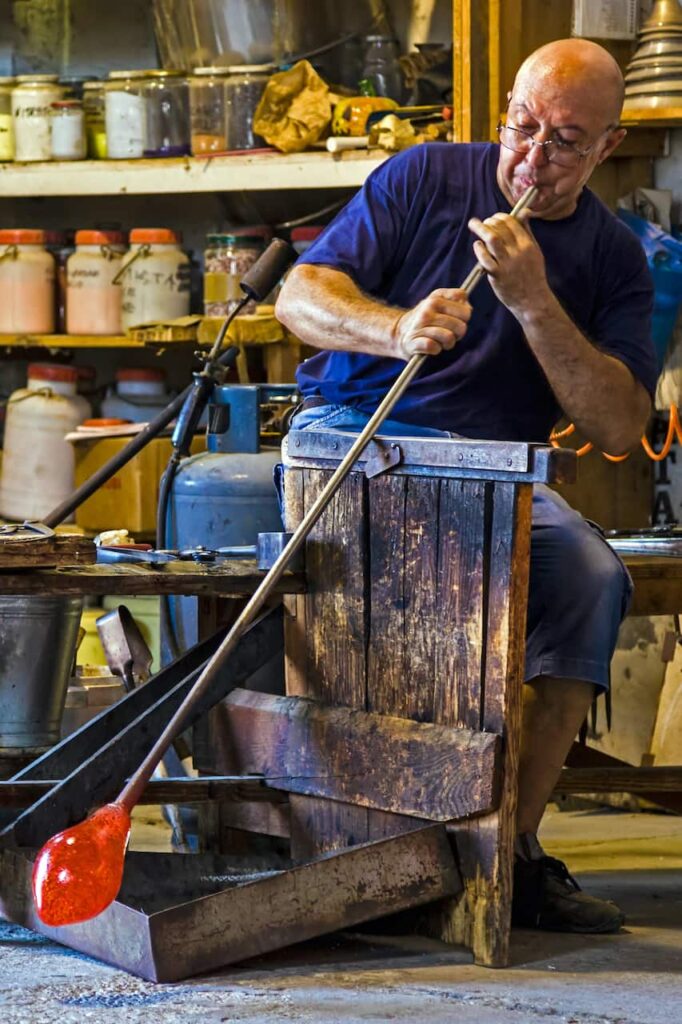
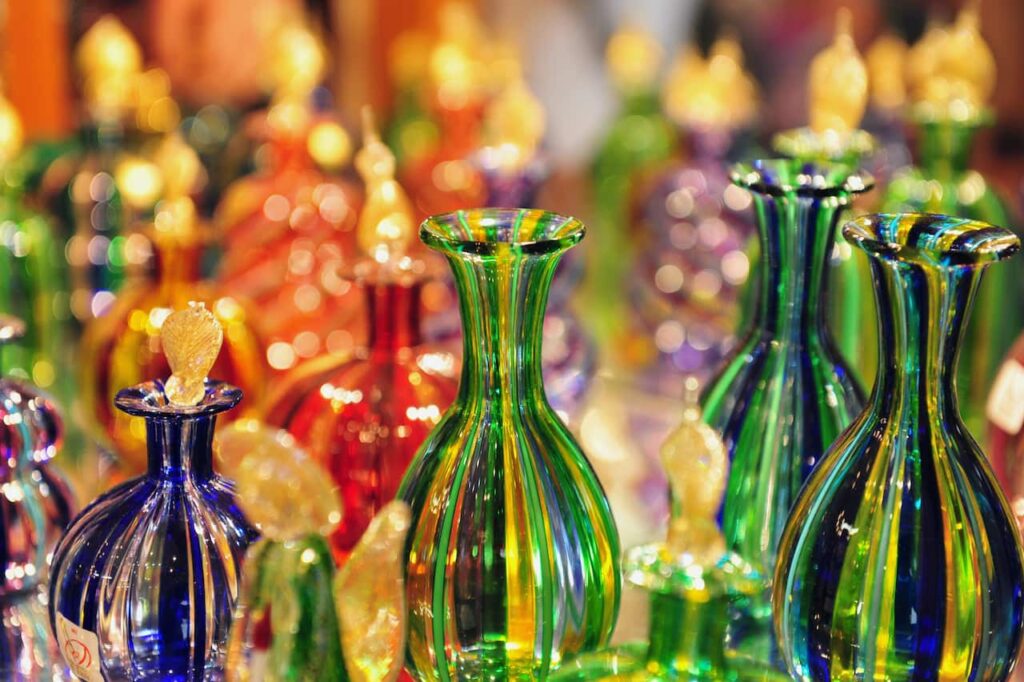
Visiting Murano, an island in the Venetian lagoon, is a top trip from Venice. Murano Island is famous for its handcrafted Murano glass.
Glass production in Murano started in 1291 when the government of Venice ordered the relocation of glassmakers to Murano from Venice as a precautionary measure from fire. However, the glassblowing process of Murano glass production started in Venice and is more than 1000 years old. The melting process of elements (silica, soda, lime, and potassium) happens at temperatures of 1500 C and goes to the point when the item mix becomes liquid. Then, thin layers of gold, silver, or various minerals with vibrant colors get added to the liquid. And finally, the liquid glass gets mouth-blown and crafted into the final glasswork (glasses, vases, chandeliers, etc).
Murano glasswork is celebrated for its unique craftsmanship, elegance, high quality, and durability.
Take a trip to Murano, visit the Murano Glass Museum, and learn about the history of Murano glasswork. And check out a Murano glass workshop!
You can take a guided tour from Venice to Murano or catch Vaporetto Line 3 from Venice to Murano. A Vaporetto ride from Venice to Murano takes 20 minutes.
12. Pay a visit to the beaches of Lido
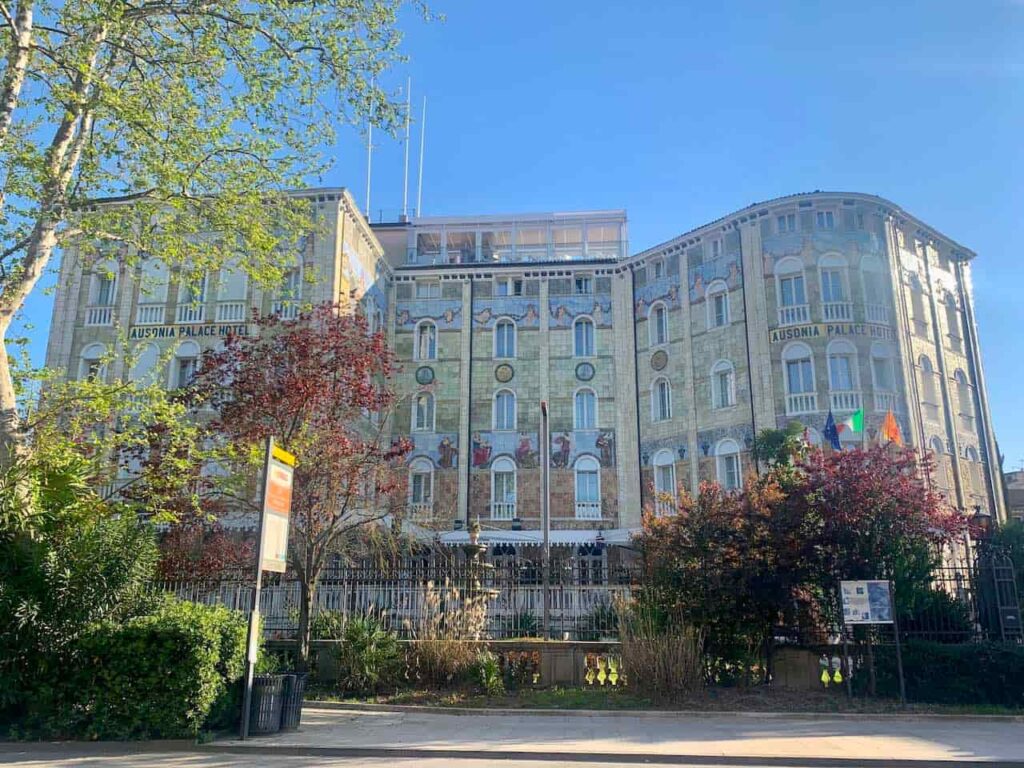
Have you ever wondered where Venetians go for swimming and beach time? They go to the beaches of Lido and Pellestrina islands. However, the sandy blue-flag beaches of Lido are their favorites.
Lido is a long and narrow island in the Venetian lagoon with sandy beaches and shallow seabed. This barrier island on the Adriatic Sea is only 7 miles (11 km) long, and most of its beaches belong to hotels. But, some of the beaches on its northern (around San Nicolo) and southern (around Alberoni) tips are public. Lido Island is home to the town of Lido, which is home to about 20,000 residents. Lido has been a famous seaside resort since the 19th century. Because of it, you can see many lovely 19th-century villas and hotels on Lido. Many were built in the Italian Art Nouveau style (Liberty Style). Celebrities, politicians, royals, and famous artists have been enjoying the beaches of Lido since the 19th century. They are regular guests of Lido’s hotels, such as the Hotel Excelsior, Grand Hotel des Bains, and Hotel Ausonia & Hungaria. It is worth mentioning that Lido hosts the Venice Film Festival in the late summer every year.
A 15-minute ferry ride will take you from Venice to Lido. Catch the Line 1 ferry from San Marco- San Zaccaria station in Venice and head to Lido to inspect its sandy beaches. A Venice – Lido ferry ticket is 10 €. But if you buy the Venice City Transport Pass (24h, 48 h, or 36h), Venice-Lido ferry rides are included. Here you can buy a 24th-Venice City Transport Pass.
13. Escape the crowds in Venice
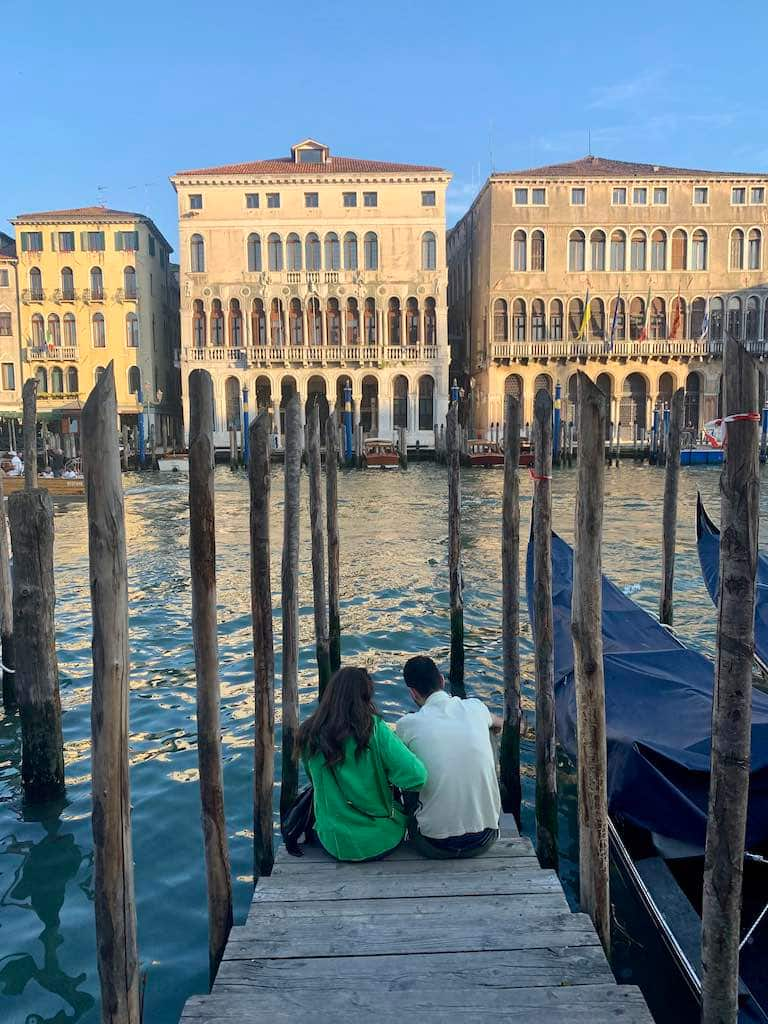
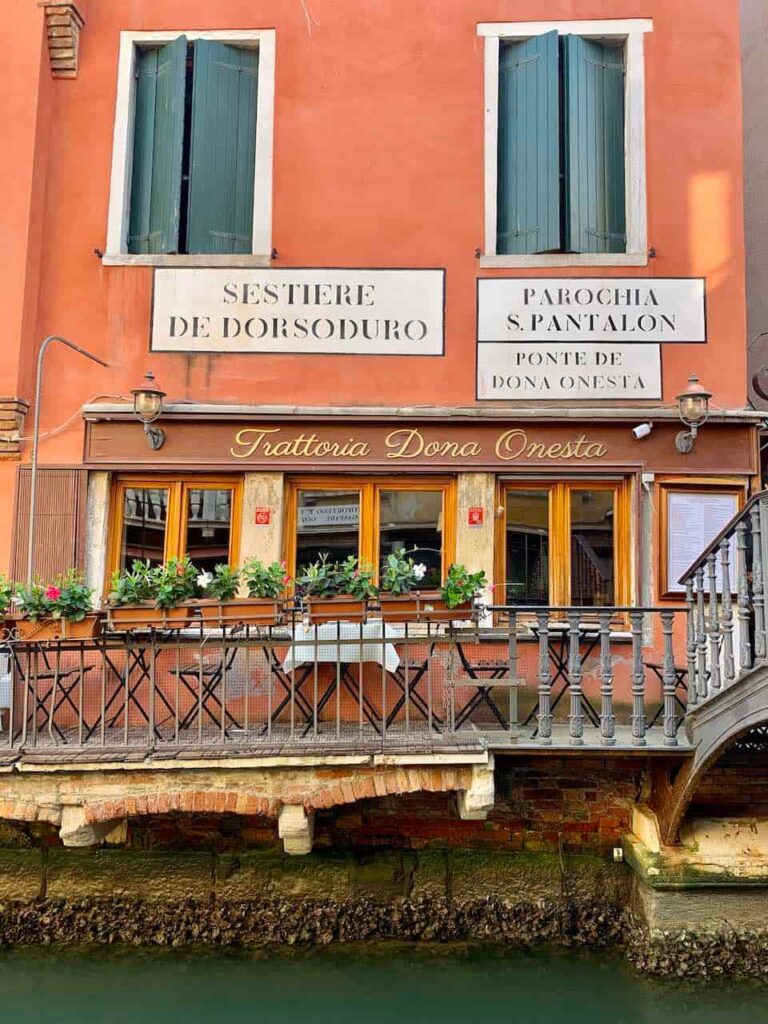
Venice has six neighborhoods called sestieri. These neighborhoods are San Marco, Cannaregio, Castello, Dorsoduro, San Polo, and Santa Croce. San Marco. Castello and Canareggio are on the left side of the Grand Canal, and Dorsoduro, San Polo, and Santa Croce are on its left side.
The main tourist attractions (like St Mark’s Square, the St Mark’s Basilica, Dodge Palace, and the Rialto Bridge) are in San Marco. San Marco is the epicenter of the tourist crowds.
San Polo is the tiniest neighborhood of Venice. It is also one of the busiest parts of Venice since the Rialto Bridge (the Rialto Bridge connects San Marco and San Polo) and many restaurants are there. The Rialto market is in San Polo, too.
Cannaregio is a less crowded neighborhood of Venice. It is a residential part of Venice, best known for its former Jewish Ghetto – the first Jewish ghetto in the world. Ca d’Oro, one of the most famous beautiful Venice palaces, is on Cannaregio, too. The Ca d’Oro palace is free to enter. Canareggio is also a neighborhood with many traditional Venetian bacari (taverns).
So, head to Cannaregio to get away from the crowds. It takes about 20 minutes by foot from San Marco to Cannaregio.
Castello is another residential and serene neighborhood of Venice.b I)t the largest neighborhood in Venice. Take a walk to Castello to see how Venetians live today and to absorb the local vibe. Besides that, Castello is home to the famous Arsenale, a former shipyard in Venice that hosts the Venice Biennale in modern times.
Dorsoduro, with its world-famous art gallery of Academia, the Peggy Guggenheim Collection, and the Church of San Sebastiano, is one of the most charming neighborhoods of Venice. It is the artistic Venice neighborhood. Stroll along the Grand Canal and explore this quieter neighborhood of Venice.
Santa Croce is not a touristy neighborhood. But, it can be busy since Piazzale Roma, the central Venice bus station, is there. Also, Tronchetto, an artificial island that serves as a parking lot, is there. Venezia Santa Lucia Railway Station is nearby. Still, Santa Croce is worth strolling for its authentic vibe and to escape the crowds of touristy areas.
14. Tour Teatro La Fenice
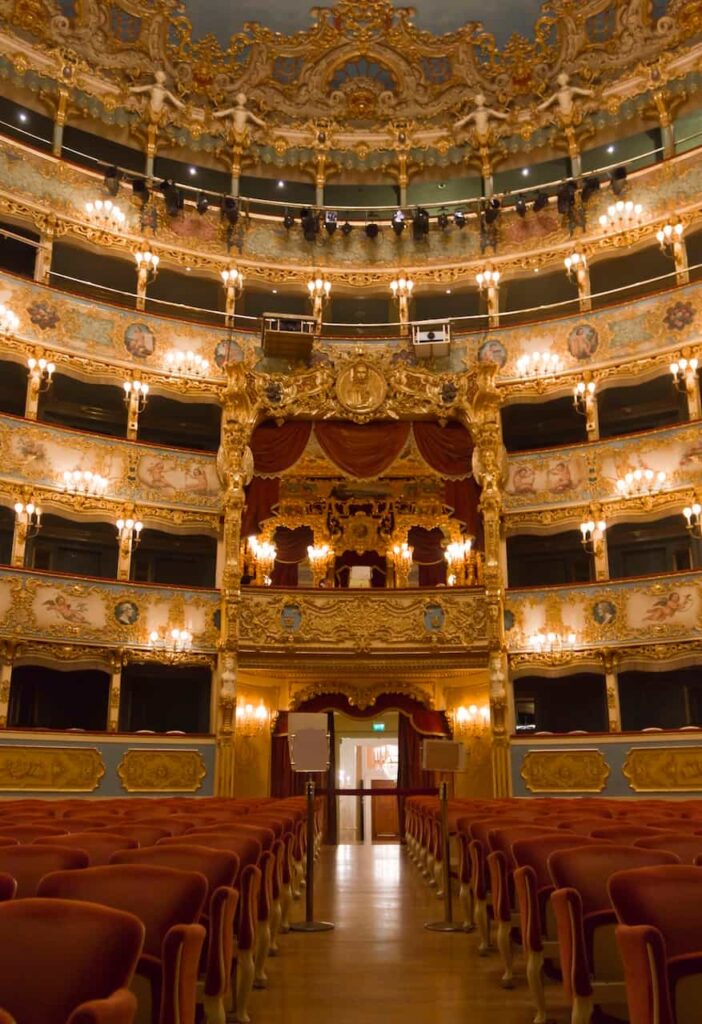
Gran Teatro La Fenice in Venice is one of the most famous world’s opera houses. Premieres of famous operas by Rossini, Bellini, Donizetti, and Verdi performed on the stage of this historic opera house. Teatro La Fenice was opened in 1792. However, it got burnt twice: in 1836 and 2004. Luckily, the architect Giannantonio Selva rebuilt it according to its original Neoclassical style. The opera house as we see it today reopened in 2003. It faces Campo San Fantin, a small square, and can receive 1.100 people. Despite misfortunes in the past, Gran Teatro La Fenice is still one of the most celebrated opera houses in the world. Book your ticket to tour one of the most beautiful Italian opera houses! Visiting the elegant Gran Teatro La Fenice is one of the most unique things to do in Venice.
Teatro La Fenice is in the San Marco neighborhood, only 5 minutes from St Mark’s Square. Buy a skip-the-line ticket to Teatro La Fenice here!
15. See Libreria Acqua Alta
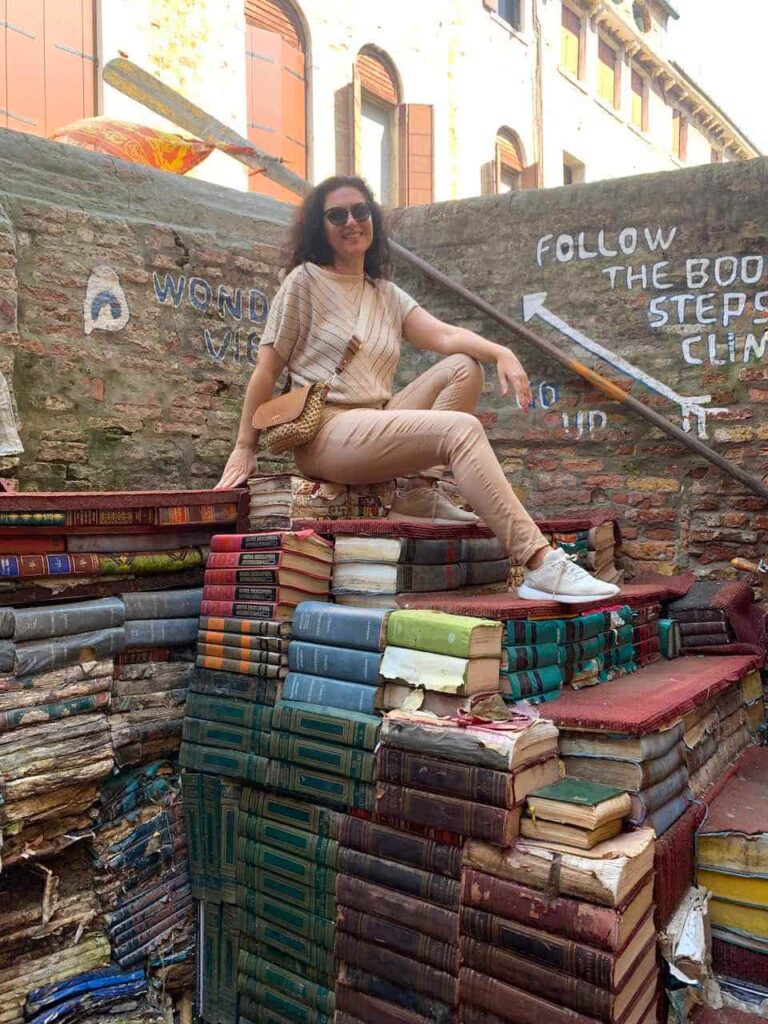
Libreria Acqua Alta (literally meaning the Bookshop of High Water) in Venice is the self-proclaimed most beautiful bookshop in the world. While this title is arguable, I would say that Libreria Acqua Alta is one of the most unique bookshops in the world. A story says the bookshop needed to keep its books in gondolas and bathtubs to save them from persistent flooding (high water). Rooms of the bookshop are stuffed with vintage books, rare books, latest editions, magazines, and maps, displayed in gondolas, boats, and tubs. Because of this, Libereria Acqua Alta became a tourist attraction in Venice. Its backyard is one of the most instagrammable places in Venice. It has a unique staircase, called ‘Follow the Books’, that visitors can climb. The staircase is made of books, and you can see a water canal from its top.
That’s not all. Libreria Acqua Alta is home to stray cats, which adds to its charm. All of this makes Libereria Acqua Alta one of the most unique places in Venice. Libreria Acqua Alta is a 10-minute walk from St Mark’s Square in the Castello neighborhood. It is open from 9 am to 7.15 pm, Monday to Sunday.
16. Visit the Peggy Guggenheim Museum
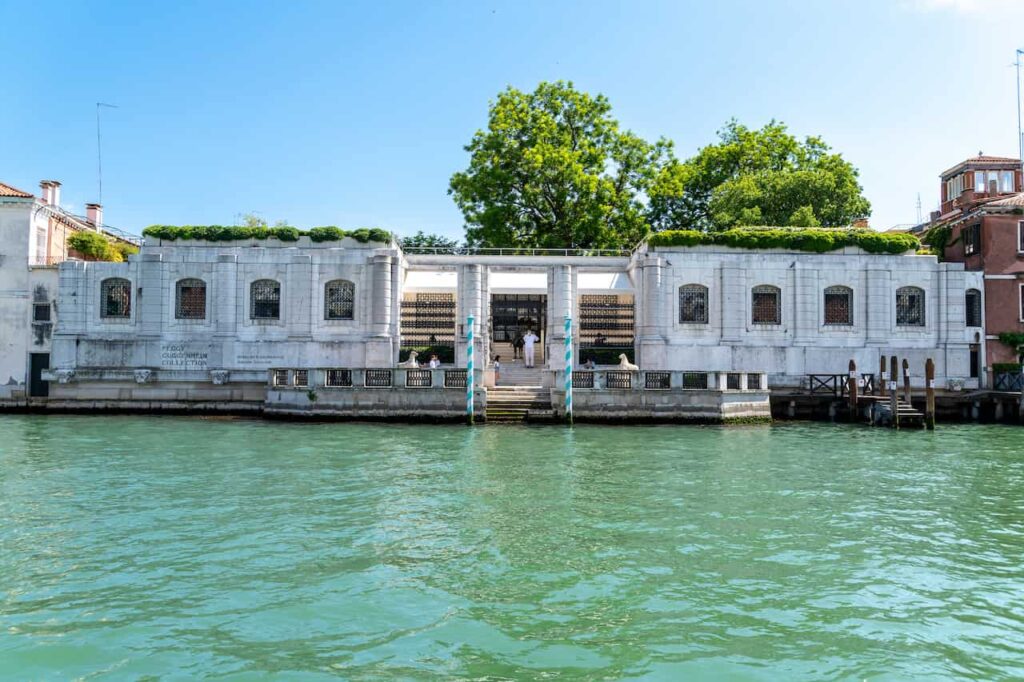
Do you like art? If so, you need to see the unique art collection of the Peggy Guggenheim Museum in Venice.
Peggy Guggenheim Museum is a famous 20th-century art museum. It is home to an impressive collection of Italian futurist and American modernist artwork, like Cubism, Surrealism, and abstract expressionism. The artwork was a private collection of art-lover Peggy Guggenheim, displayed to the public after her death. The collection has works of many prominent artists of the 20th century, like Salvador Dalí, Joan Miró, Pablo Picasso, Piet Mondrian, Wassily Kandinsky, René Magritte, and Paul Klee, to name a few. So, not surprisingly, the Peggy Guggenheim Museum is the second-most visited site in Venice, after the Dodge Palace. You can visit the collection independently or tour it privately with an expert guide.
The museum is in the 18th-century Palazzo Venier dei Leoni on the Grand Canal in the Dorsoduro neighborhood in Venice.
Peggy Guggenheim Museum is a 20-minute walk from St Mark’s Square with a short traghetto ride across the Grand Canal.
Peggy Guggenheim Museum is open from 10 am to 6 pm from Wednesday to Monday. It is closed for visits on Tuesday. The entrance fee is 16€, and the ticket office closes at 5.30 pm.
17. Go to Burano
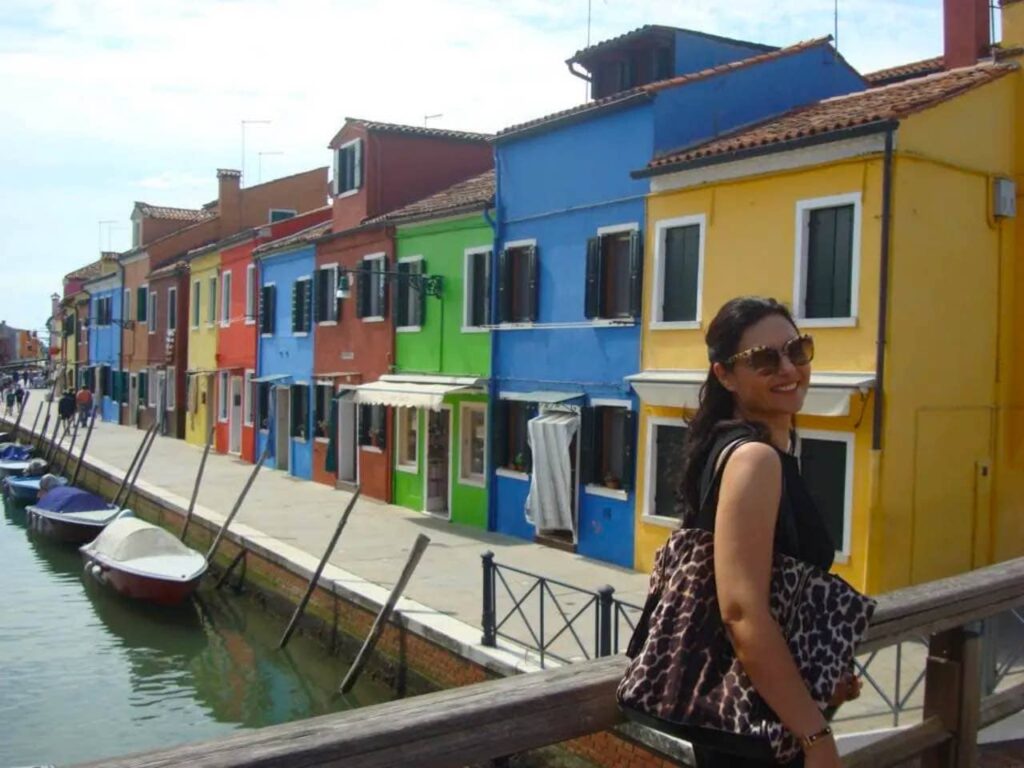
Colorful Burano island is the most photographed island in the Venice Lagoon for its eye-catching houses. Vibrant red, blue, green, yellow, pink, etc. houses attract numerous visitors from photographers and Instagrammers seeking perfect photo opportunities to cheerful souls appreciating colorful surroundings and curious travelers. Burano was a fisherman’s village once. Burano’s fishermen painted their houses in vibrant colors to find them in a heavy fog more easily.
It is worth mentioning that Burano is not only famous for its colorful houses but also for its tradition of lace production. The tradition of lace making on Burano goes back to the 16th century. Nowadays, visitors of Burano can see the lace pieces dating back from the 16th to 20th centuries in the Lace Museum. The Lace Museum is open from 10 am to 4 pm from Tuesday to Sunday. And, it is closed on Monday. The entrance fee is 5€.
Burano is a 45-minute vaporetto ride from Venice. The vaporetto (ferry) ticket is 9.50 € and is valid for 75 minutes. A visit to Burano Island takes from one hour to two hours. Catch the vaporetto (ferry) Line 12 on San Marco or take a guided tour to Burano and Murano and visit two of the loveliest islands in the Venice Lagoon.
18. Enjoy vaporetto rides in the Venice Lagoon
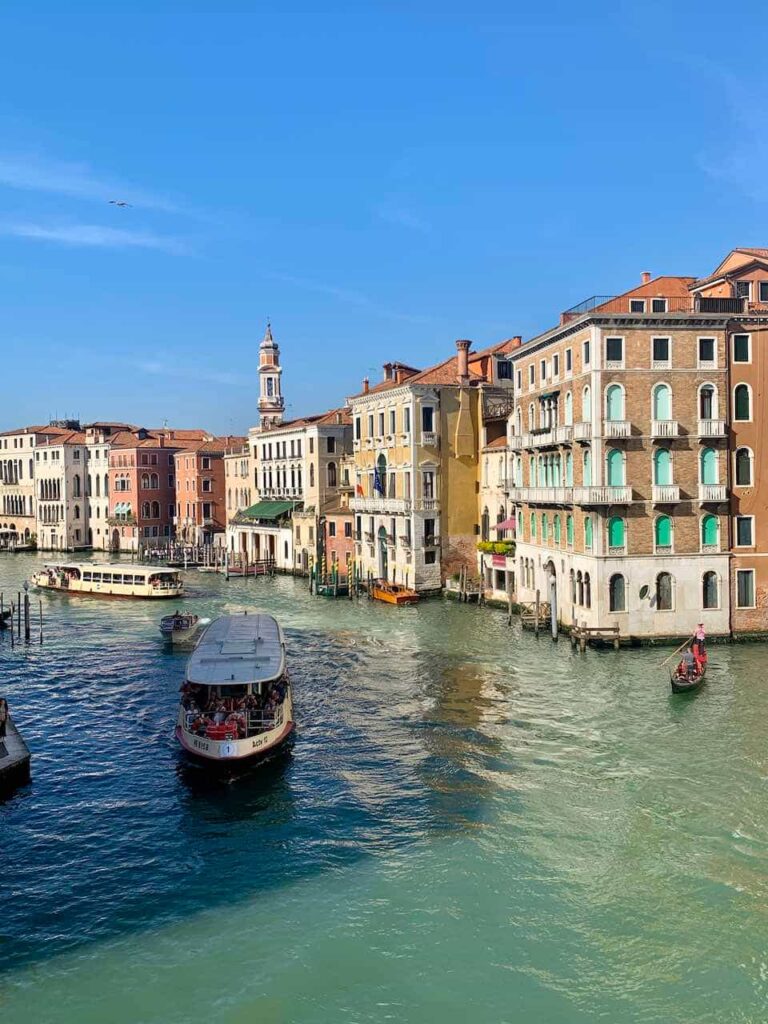
Take a gondola ride if you are planning your first visit to Venice. It is a must-have experience in a lifetime. Choose smaller Venice canals, which are not available to vaporetti, for your gondola ride. Furthermore, if you plan to stay more than one day in Venice, it is wise to buy Venezia Transport Pass to have as many as you want vaporetto rides. You can enjoy the rides along the Grand Canal but also go to the islands of Lido, Murano, Burano, and Torcello with the Venezia Transport Pass.
If you want to visit Lido, Burano, and Murano independently (not on a guided tour), take a Venezia Transport Pass. It is good value for money!
One-day Venezia Transport Pass is 25€, 2-day Venezia Transport Pass is 35€, 3-day Venezia Transport Pass is 45€, and 7-day Venezia Pass is 65€.
19. See the Bridge of Sighs
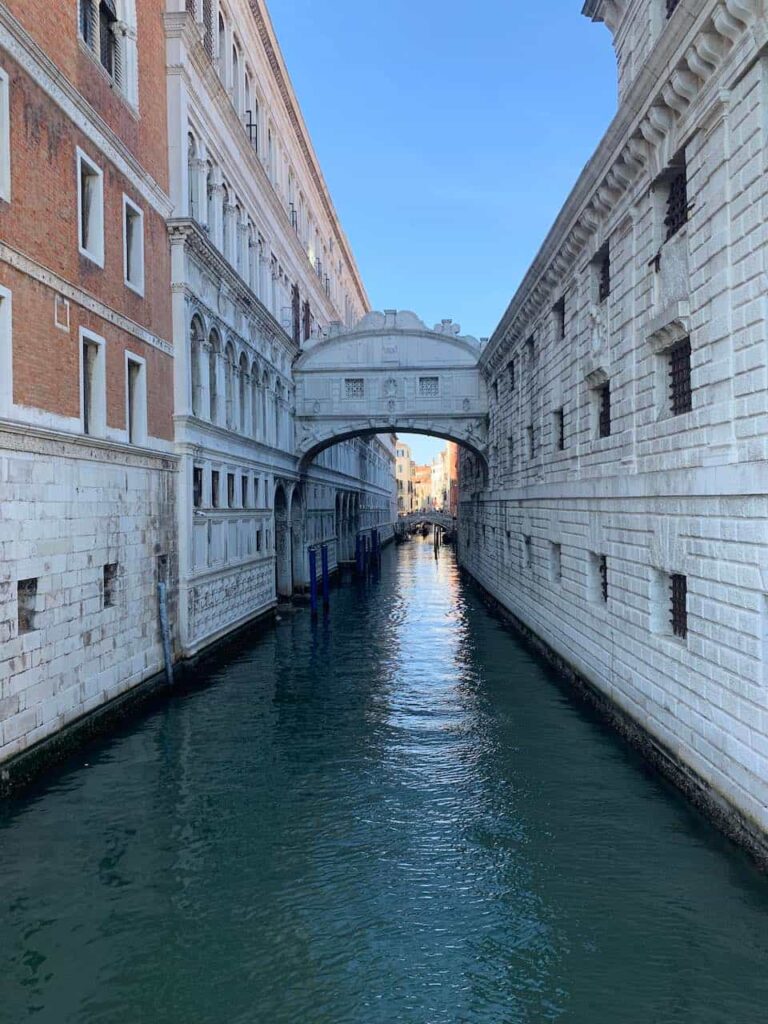
Bridge of Sighs (Ponte dei Sospri in Italian) is the most famous enclosed Venice bridge. Bridge of Sighs is undoubtedly a stunning bridge (made of white limestone) despite the sad fact it led the prisoners to their prison cells. It was built in the 1600s and connected the interrogation rooms in the Dodge Palace and the prisons. Nowadays, having a gondola ride under the Bridge of Sighs on Rio di Palazzo is among the most popular things to do in Venice.
Bridge of Sighs is an adjunct to the Dodge Palace (Palazzo Ducale).
20. Go to Rialto market for a unique shopping experience
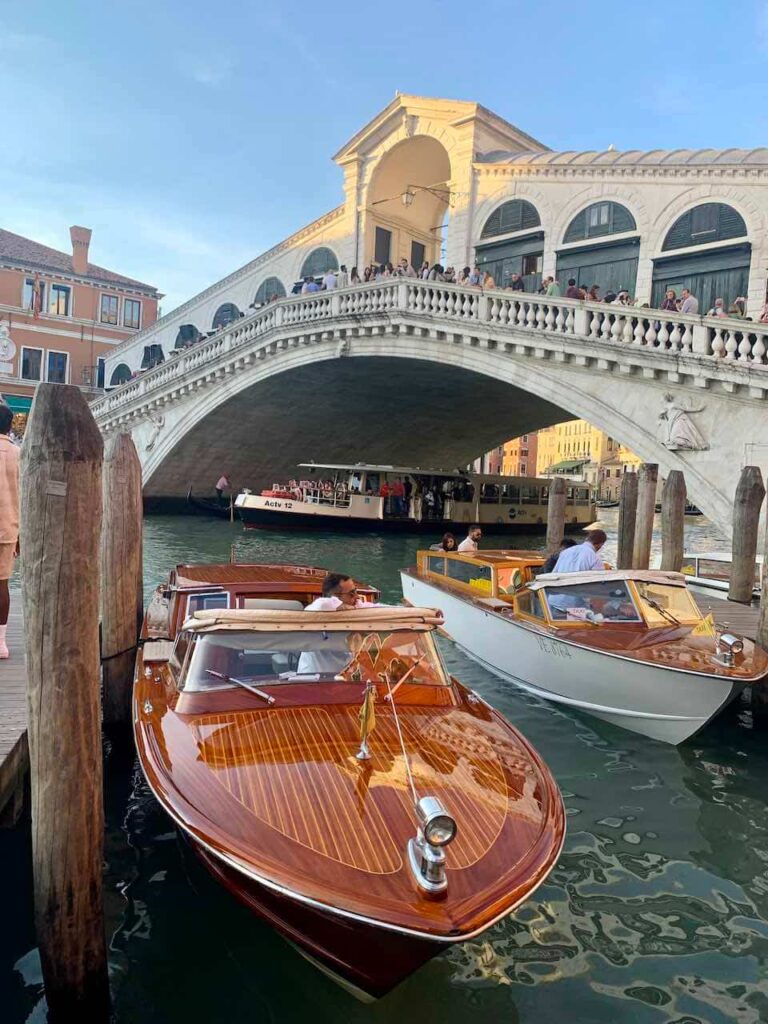
Rialto market (Rialto Mercato in Italian) is a day market where vendors sell fresh local produce (seasonal fruits and vegetables), seafood (from the Adriatic Sea), and Venetian specialties.
The market has two sections.
The covered section of the market is called pescheria, and it sells fish and seafood. The uncovered section is called erbaria, and it’s the place where the vegetables and fruit stalls are.
Rialto market is one of the oldest markets in Venice. Although the current market building is from the 16th century because of a previous fire, the Rialto market dates back to 1097. Rialto Market is the favorite place of Venetians for getting their groceries.
Rialto market is a top place to visit in Venice for its unique and local atmosphere. It is a treat for the senses, from the colors to the scents. Rialto Market provides a one-of-a-kind shopping experience and many fabulous photo opportunities.
Rialto market is a 1-minutes walk from the Rialto bridge along Canal Grande in the San Polo neighborhood. Go to Rialto Market early in the morning to observe locals and avoid later hours when tourists come.
The market is open from Monday to Saturday from 7.30 am to 1 pm. The fish market section (pescheria) is open from 7.30 am to 1 pm from Tuesday to Saturday.
You can visit the Rialto Market independently or on this 2-hour guided tour.
21. Dell’Accademia Museum Gallery
Home to two world-famous galleries Dell’Accademia Museum Gallery and Peggy Guggenheim Museum, Dorsoduro is popularly known as the artistic neighborhood of Venice.
While the Peggy Guggenheim Museum exhibits 20th-century artwork, the Dell’Accademia Museum Gallery exhibits pre19th-century artwork. Dell’Accademia Museum Gallery has a collection of about 800 paintings by the greatest artists who worked from the 14th to the 19th centuries. Dell’Accademia Museum Gallery holds the works by Giovanni Bellini, Paolo Veronese, Tinoretto, Titian, Giorgione, Piero della Francesca, Andrea Mantegna, Pietro da Cortona, and Francesco Maffei, to name a few. Although you can easily spend several hours touring the gallery, a visit to the Dell’Accademia Museum Gallery takes up to two hours on average.
Dell’Accademia Museum Gallery at the foot of the Academy Bridge. The Accademia Gallery is a 5-minute walk from the Peggy Guggenheim Museum on the Grand Canal in Dorsoduro. Dell’Accademia Museum Gallery is open from 8.15 am to 7.15 pm from Tuesday to Sunday and from 8.15 am to 2 pm on Mondays. The entrance fee is 15€. However, there is a discount for early morning ticket purchases. If you get to the ticket office before 9 am, you can get your ticket for 10€.
22. Tour the first Jewish Ghetto in Cannaregio
Do you know where was the first Jewish ghetto in the world? It was in the Cannaregio neighborhood in Venice.
The Jewish ghetto in Venice dates back to the 16th century when the Senate of the Republic of Venice issued a decree to segregate the existing Jewish community from the rest of the Venetian population in the walled area. The decree ordered all Jews who came from Germany, the rest of Italy, Spain, and the Levantine (fearing persecution) to Venice to live in one enclosed neighborhood. They were allowed to practice their faith behind the walls of the ghetto, while the gates of the ghetto closed every sunset and opened again every dawn. Leaving the ghetto was allowed only during the day.
The Jewish community lived in the ghetto from 1516 (when the decree was issued) until 1797, the year of the fall of the Republic of Venice. Napoleon Bonaparte and French troops conquered Venice and destroyed the walls of the ghetto in 1797.
The Jewish Ghetto in Venice has five synagogues and a museum, you can visit on a guided tour. Book a tour and learn about the first Jewish ghetto in the world.
The Jewish ghetto is 30 minutes from the St Mark’s Square in Venice.
23. Scala Contarini del Bovolo
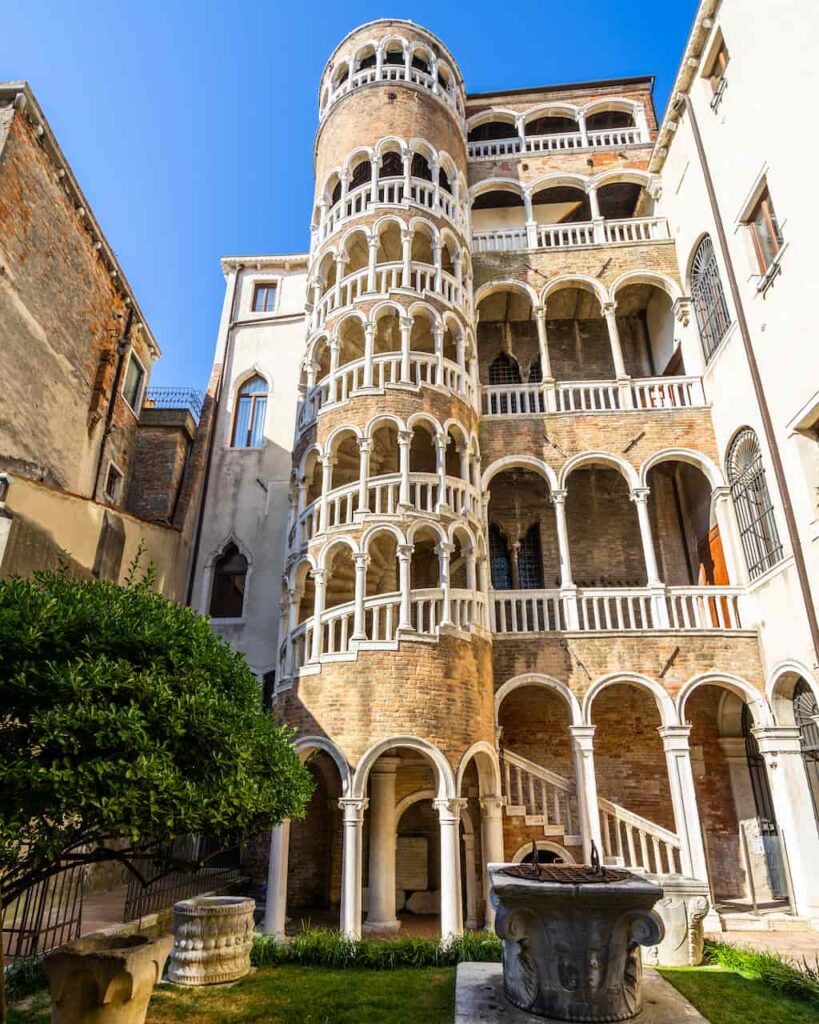
Scala Contarini del Bovolo is a spectacular 15th-century spiral staircase of Contarini del Bovolo Palace.
The palace was the family home of a nobleman called Pietro Conatrini. The staircase was made to connect two wings of the palace. The staircase looks like a cylindrical tower with arches and handrails. It got the name bovolo, meaning snail in the Venetian dialect for its snail-like spiral shape.
It has 80 steps, is 80m high, and has a dome on its top. The staircase represents a mix of 3 architectural styles: Renaissance, Gothic, and Venetian-Byzantine.
Scala Contarini del Bovolo is one of the most unique monuments in Venice. It is also one of the most Instagrammable sites in Venice.
Scala Contarini del Bovolo is a 6-minute walk from St Mark Square in the San Marco neighborhood. It is also a 7-minute walk from the Rialto Bridge. The entrance fee is 9 €. The ticket gives access to the staircase, the Belvedere, and some palace rooms. Visits to Scala del Bovolo last strictly 30 minutes, as access is limited to 35 people every half hour. The staircase is open for visiting from 10 am to 6 pm seven days a week. Get your ticket to Scala Contarini del Bovolo here.
- The Most Luxurious Secret Castle Hotels in Italy: Romantic Escapes You Won’t Believe You Can Stay In - November 14, 2025
- Vienna, Where Time Waltzes — The Most Magical Things to Do in Vienna, Austria - November 8, 2025
- The Prettiest Castle Hotels in Scotland You’ll Want to Book Right Away - November 7, 2025

